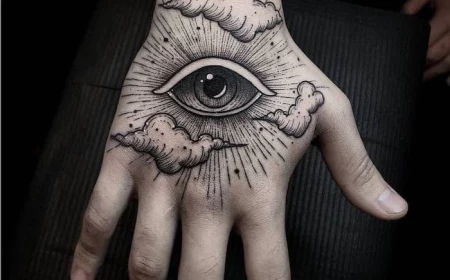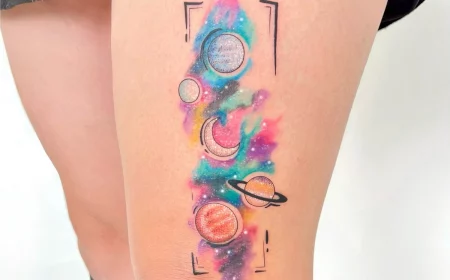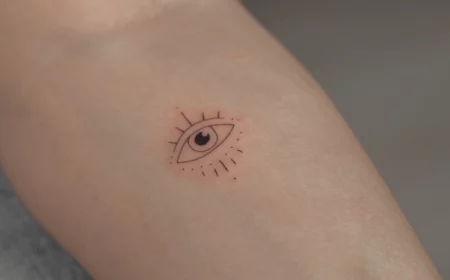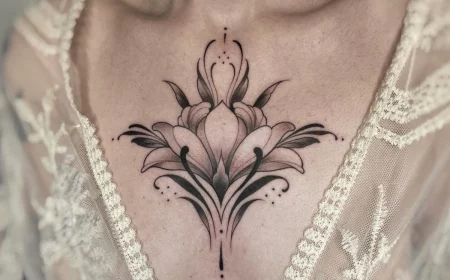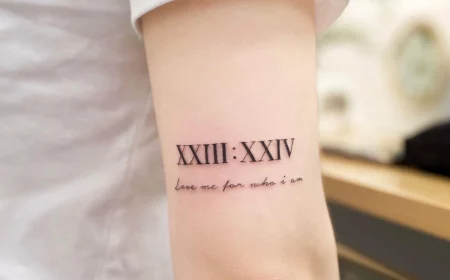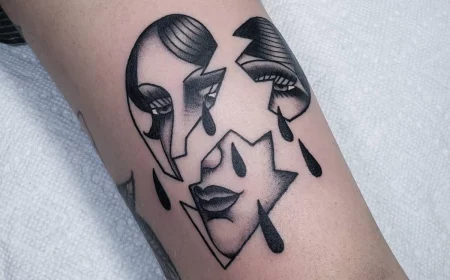The Real Deal on Small Tattoos: What Pros Wish You Knew
I’ve seen so many tattoo trends come and go. Remember when everyone wanted huge, bold traditional pieces? Then came the super-intricate geometric sleeves. But for years now, the one thing people ask for more than anything else, especially if it’s their first time, is a small, delicate tattoo. They’ll show me pictures of a tiny symbol on a wrist, a single word tucked into the ribs, or a miniature flower behind an ear. And I get it—there’s something undeniably cool about their subtlety.
In this article
But here’s the thing. While they look simple, these tiny tattoos are some of the most technically difficult pieces we do. If I’m working on a massive Japanese-style back piece and my hand wobbles a tiny bit, a big thick line can hide it. But on a single-needle tattoo the size of a quarter? There is absolutely zero room for error. Every little imperfection gets magnified.
That’s why I wanted to write this down. This isn’t just about showing off pretty pictures. It’s about sharing what I’ve learned from thousands of hours holding a tattoo machine. Think of this as the exact conversation we’d have in my studio before a single drop of ink even comes out. We’ll get into the craft, how your skin actually holds ink, and the honest truth about what these tattoos will look like in one, five, or even twenty years.
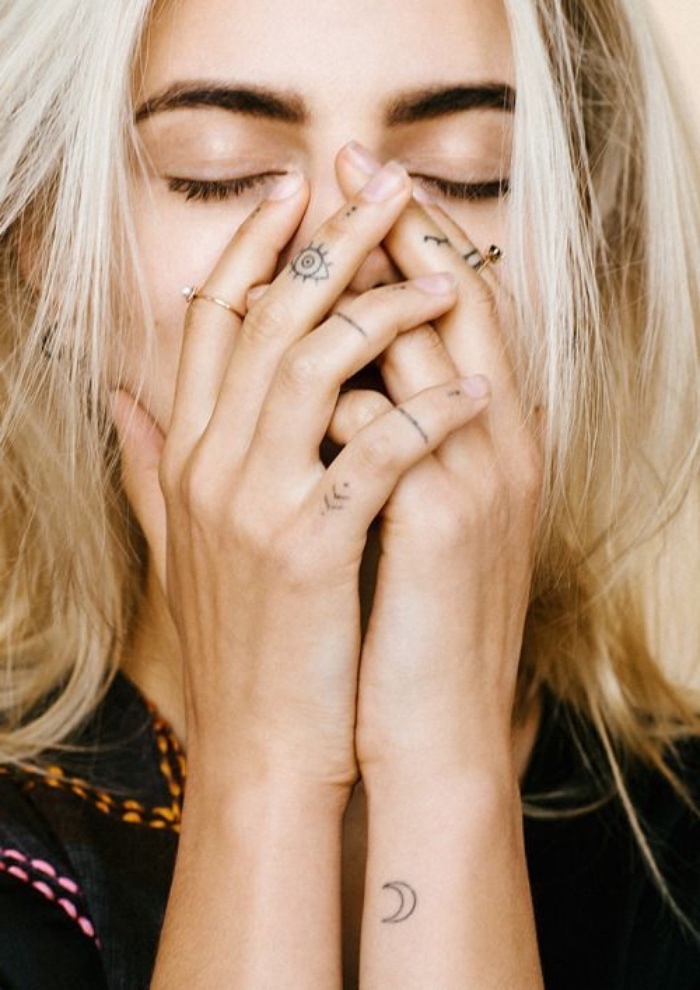
Why Small is So Damn Hard: A Quick Skin Lesson
To really understand why tiny tattoos are so tricky, you have to get to know the canvas we’re working on: your skin. It’s not a sheet of paper. It’s a living organ with a few important layers. The very top layer, the epidermis, is constantly shedding and renewing itself. If we only put ink there, your tattoo would literally flake away in a few weeks.
The sweet spot for a permanent tattoo is the dermis, the stable layer right underneath. It’s only about one to two millimeters thick—roughly the thickness of a credit card. An artist’s entire job is to precisely park ink particles right in that tiny little zone. If you go too shallow, the ink gets pushed out. Go too deep, and you hit the fatty layer below, the hypodermis. Ink in that fat layer spreads out like a drop of water on a paper towel, creating a blurry, bruised-looking mess called a “blowout.”

Some body parts are especially tough. On bony spots like the ribs, fingers, feet, and sternum, the skin is incredibly thin. The margin for error is razor-thin. It takes a super steady, experienced hand to hit that perfect depth every single time. So, this isn’t just boring science; it directly impacts whether your tattoo looks crisp or like a fuzzy blob.
The Pro Toolkit for Fine-Line Tattoos
Nailing a crisp, lasting small tattoo is about more than a good drawing. It’s a mix of the right tools, the right technique, and a deep understanding of how the machine and skin work together. These are the core skills that take months, sometimes years, to perfect.
Needles, Ink, and Speed
For the most delicate work, we often use a “single needle,” which is exactly what it sounds like. It creates the thinnest line possible. More commonly though, we might use a small grouping like a 3 Round Liner (or 3RL), which has three needles in a tight little cluster. This gives the line a bit more stability and durability than a single needle but still looks incredibly fine. But the needle is just part of it.
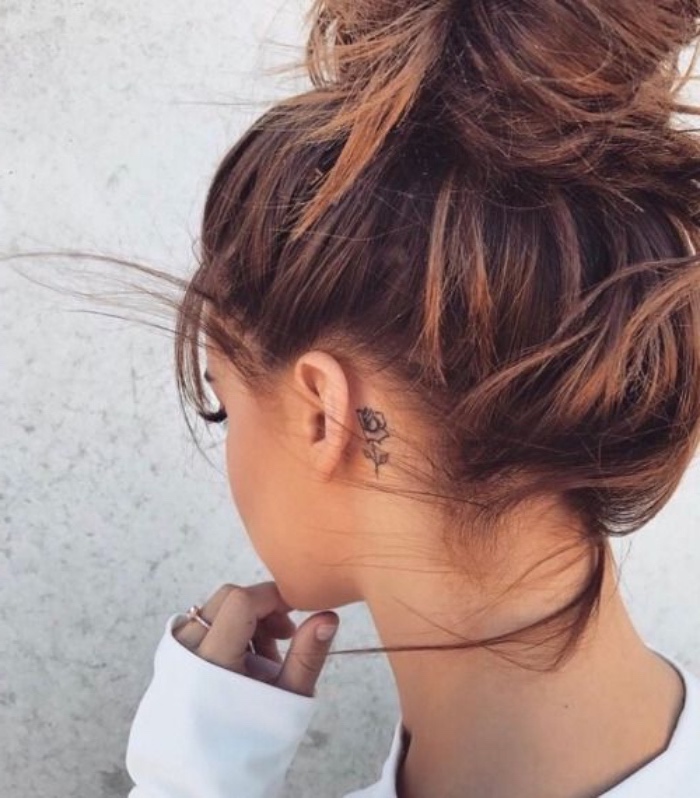
The real art is balancing the machine’s speed with your hand speed. A machine running too fast while the artist’s hand moves slowly will chew up the skin and cause a blowout. A fast hand with a slow machine will create a faint, scratchy line that just won’t last. The goal is to find that perfect harmony to lay a solid line in a single pass. Going over a fine line again and again just makes it thicker and risks messing up the skin.
The Three-Point Stretch
You just can’t tattoo on loose skin. To get a clean, perfect line, the skin has to be pulled tight and flat. We use what’s called a three-point stretch. With my non-tattooing hand, I’ll use my thumb and index finger to pull the skin apart. Then, I’ll use the pinky or heel of my tattooing hand to create a third point of tension. This makes the surface as taut as a drumhead. It’s absolutely crucial on soft spots like the inner bicep or stomach. Without a good stretch, the needle will just bounce and snag, creating a wobbly, dotted line instead of a solid one.
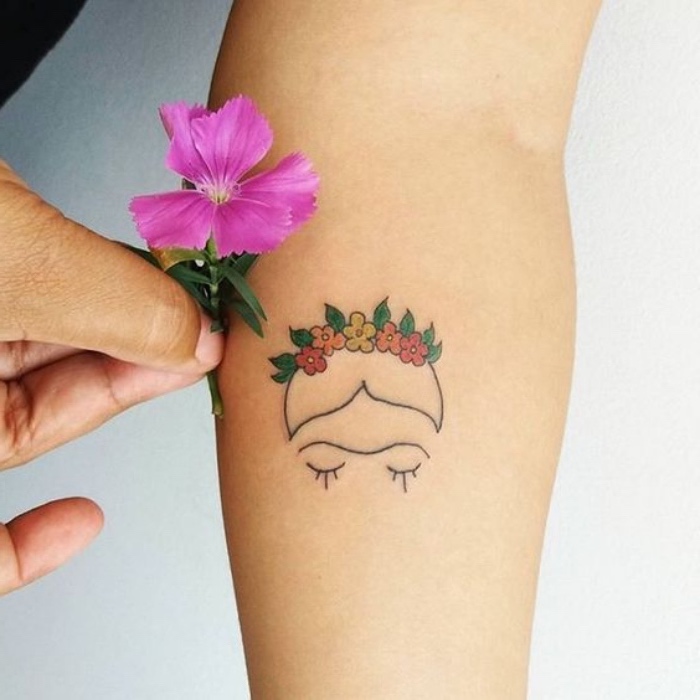
Placement vs. Longevity: The Honest Conversation
Okay, this is one of the most important chats we need to have. A tattoo that looks amazing on Instagram might be a terrible idea for a certain body part. I feel like it’s my job to give you a realistic preview of how your tattoo is going to age. So let’s break it down.
High-Wear vs. Low-Wear Areas (with a Pain-o-Meter)
Think about the parts of your body that get the most sun, friction, and movement. These are your high-wear zones.
- Fingers and Hands: This is the
1 requested spot, and also the
1 most problematic. Constant hand washing, friction from pockets, and sun exposure just hammer these tattoos. I tell every single client who wants a finger tattoo to expect it to fade and to plan on getting it touched up, maybe every couple of years. Pain-wise, it can be a surprisingly sharp 7/10 because of all the nerves and bone. Longevity? To be frank, it’s a 3/10. I once had a client who swore they’d be careful with their beautiful script tattoo on their finger. They came back six months later, and it had already blurred into an unreadable smudge. We had to cover it with a much bigger, bolder design. It’s just what happens!
- Feet and Ankles: Very similar to hands. They’re always rubbing against socks and shoes. Tattoos on the top of the foot can hold up okay, but the sides and ankles are prone to fading. Pain is also up there, probably a 6/10 or 7/10 right on the ankle bone.
- Inner Bicep: Now we’re talking! This is a fantastic spot. It’s protected from the sun, the skin is stable, and it’s a low-friction area. On the pain scale, most people rate it a 3/10 or 4/10—more annoying than truly painful. For longevity, it’s a solid 9/10. Tattoos here just age beautifully.
- Forearm: A great choice. The inner forearm is an excellent, protected canvas. The outer forearm is solid too, but it gets a ton of sun, so you have to be obsessive with sunscreen to keep it from fading. Pain is very manageable, usually in the 4/10 range.
- Ribs and Sternum: I’m not gonna lie, these spots can be spicy. Pain is easily an 8/10 or 9/10 for many people. But the reward is that these areas are well-protected and hold ink incredibly well over time. A great long-term investment if you can handle the session.
The Reality of Aging Ink
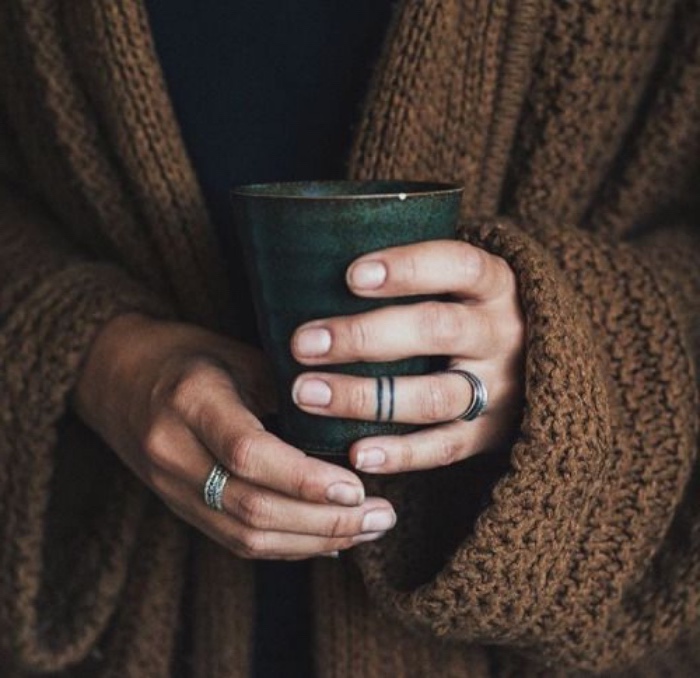
Ink spreads. It’s an unavoidable fact. Over the decades, the ink particles in your skin will slowly migrate. A line that was once razor-sharp will soften and thicken a tiny bit. This is normal for all tattoos, but it’s especially critical for small, detailed designs.
Let’s say you want a tiny, intricate snowflake the size of a dime. Fresh, it looks incredible. But in 10 years, as those thin lines soften and spread ever so slightly, they can blur together into an unrecognizable smudge. A good artist will design with this in mind. We might suggest simplifying the design or making it just a little bigger to ensure there’s enough empty space between the lines to let it age gracefully. It’s not about ruining your idea; it’s about making sure you’ll still love it in a decade.
Your Guide to Getting That First Small Tattoo
Alright, so you’ve weighed the pros and cons and you’re ready to go. Finding the right artist is the single most important decision you’ll make.
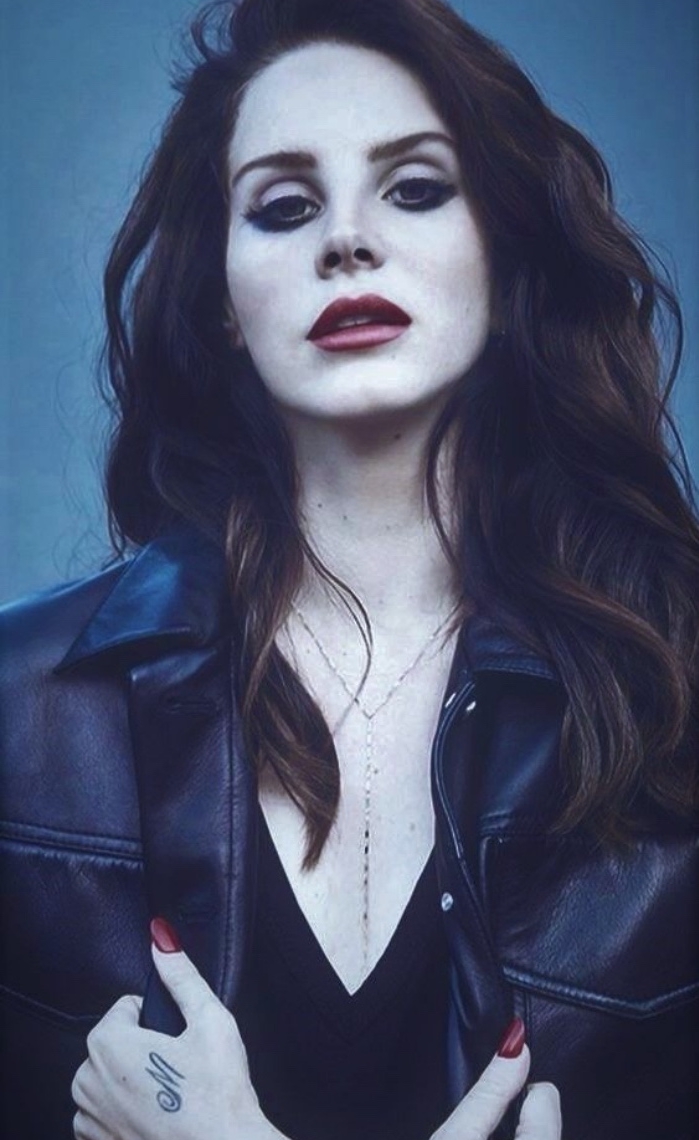
How to Find the Right Pro
First off, please do not choose an artist based on price. A small tattoo isn’t necessarily a cheap tattoo. You’re paying for skill, experience, and a sterile environment. Most professional shops have a minimum charge, often between $100 and $250, that covers the cost of a fully sterile, single-use setup, even for a five-minute tattoo.
Here’s a quick guide for finding a great fine-line artist in the modern age:
- Open up Instagram. Search hashtags like
[yourcity]finelinetattoo or
[yourcity]microtattoo.
- Scroll through the results and find styles you love.
- CRITICAL STEP: Don’t just look at the fresh, gorgeous photos. Hunt for the word “healed” in their captions or look for a “Healed Work” story highlight on their profile. Any tattoo can look good when it’s fresh and a little swollen. The real test of skill is how it looks once the skin has settled.
- Look for clean, consistent lines. Zoom in! Are the lines solid and confident, or are they a little shaky? A good portfolio should be full of the kind of work you want.
Before Your Appointment
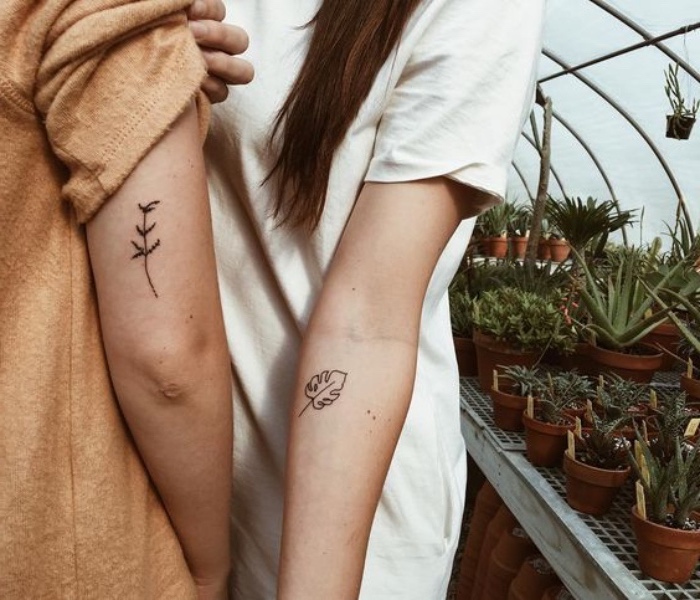
Quick tip! Here’s a simple checklist for appointment day:
- Have a good meal an hour or two beforehand. It helps with blood sugar and pain management.
- Bring your government-issued ID. You can’t get tattooed without it.
- Wear comfy clothes that give easy access to the spot you’re getting tattooed.
- Bring a water bottle and maybe a small snack.
- Be open to feedback during your consultation! If an artist suggests a change, they’re using their experience to give you the best possible tattoo.
By the way, I always get asked about tipping. It’s never required, but if you love your tattoo and had a good experience, it is so appreciated. The industry standard is similar to other service industries, around 15-25% of the tattoo cost.
Aftercare is Everything
The artist’s job is done when you walk out the door. Now it’s on you. I’ve seen perfect tattoos get ruined by bad aftercare.
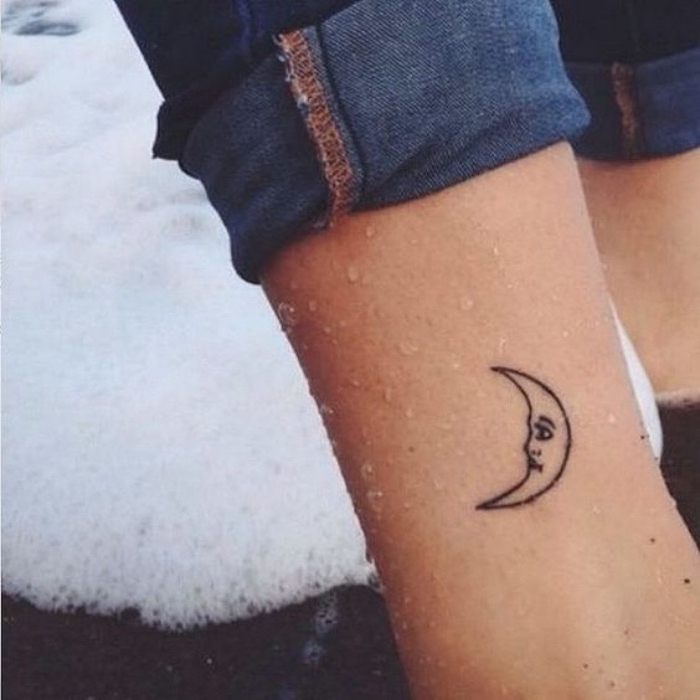
For fine-line work, keep it simple:
- Keep it Clean: Gently wash the tattoo 2-3 times a day with a mild, unscented soap (like Dr. Bronner’s Baby Mild) and lukewarm water. Pat it dry with a clean paper towel. Never scrub.
- Moisturize Lightly: Apply a very thin layer of a breathable, unscented lotion. I usually recommend something simple you can grab at any drugstore, like Lubriderm or Cetaphil. The skin should have a slight sheen, not be goopy.
- What to Expect: The first couple of days, it’ll be red and sore. Around days 3-7, it’ll start to itch and flake. This is normal! Do not pick at it. A red flag would be excessive oozing, a foul smell, or red streaks radiating from the tattoo. If you see that, call your artist or a doctor.
- No Soaking, No Sun: For at least two to three weeks, avoid baths, pools, and oceans. Keep it completely out of direct sun. Once it’s healed, sunscreen is your tattoo’s best friend. UV rays are the #1 cause of fading.
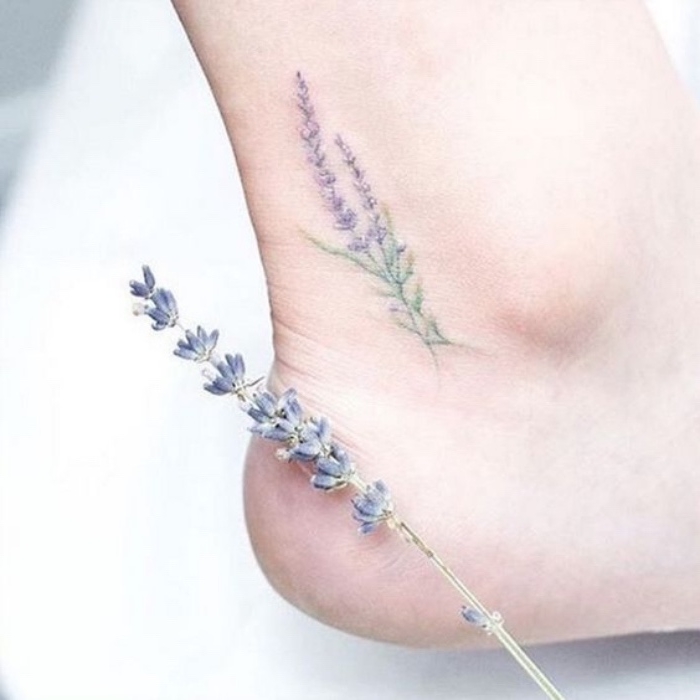
A Final Word on Safety
Okay, last but definitely not least: safety. This part is non-negotiable. A professional tattoo studio is a clean, sterile environment. All needles must be new, single-use, and opened in front of you. The artist must wear gloves. Any surface they touch, like their machine or power supply, should be wrapped in a disposable plastic barrier. In the US, artists should be certified in bloodborne pathogen prevention, and the studio should be licensed by the local health department. Never, ever get tattooed in someone’s kitchen or from an unlicensed artist. The risk of infection is not worth saving a few bucks.
A small tattoo might seem like a minor thing, but it deserves the same respect and skill as a massive piece. It’s a permanent collaboration between your idea and your artist’s expertise. Take your time, do your research, and trust the pros. A well-done small tattoo can be a beautiful piece of art you’ll love for a lifetime.
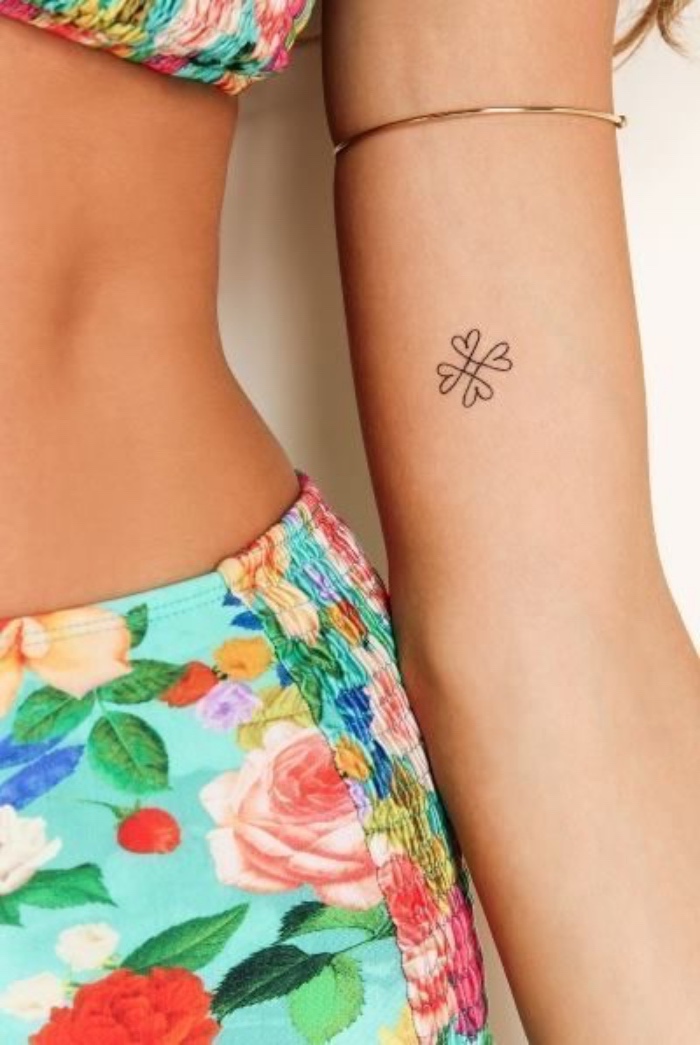
Inspiration Gallery
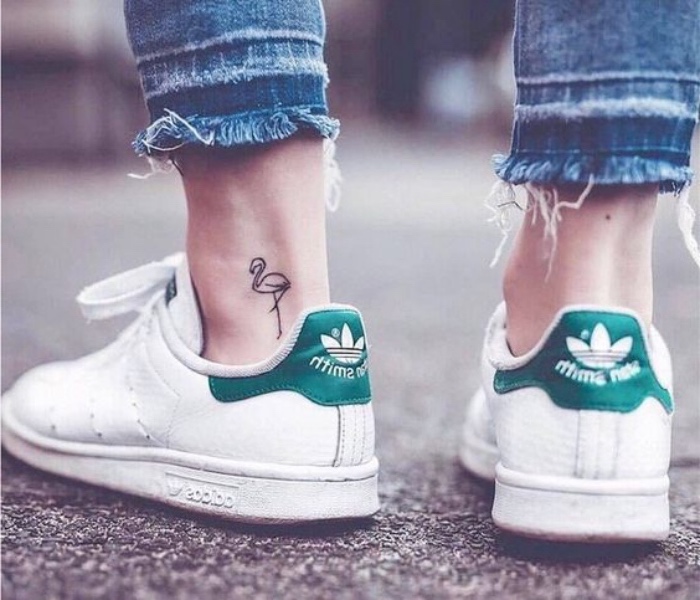
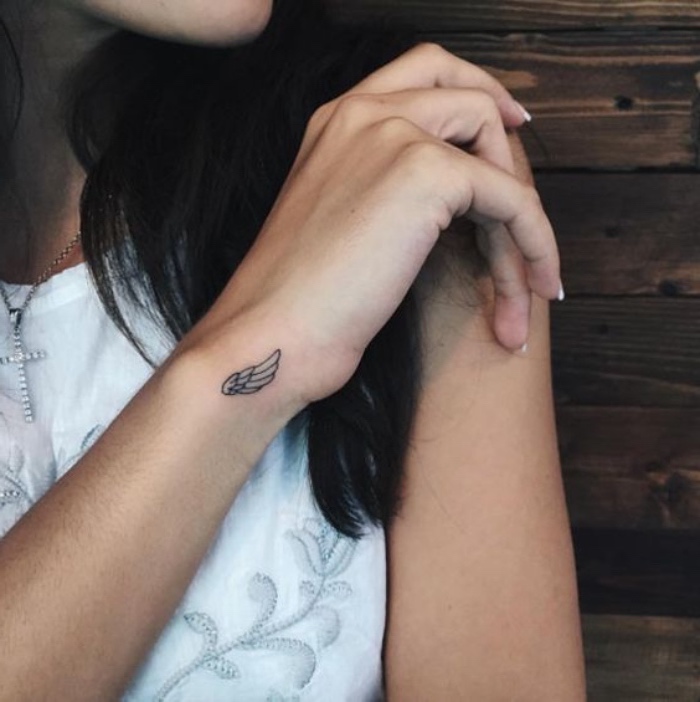
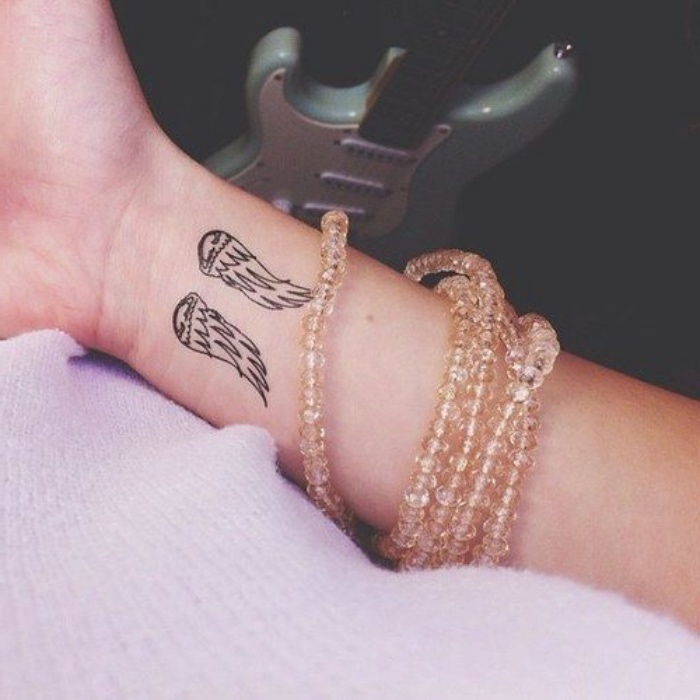

Fine-line tattoos require delicate aftercare. For the first few days, gently wash the area with an unscented soap and pat dry—don’t rub! Apply a paper-thin layer of an ointment like Aquaphor or a specialized tattoo balm. The goal is to keep it lightly moisturized, not smothered, to allow the skin to breathe and heal without scabbing heavily.
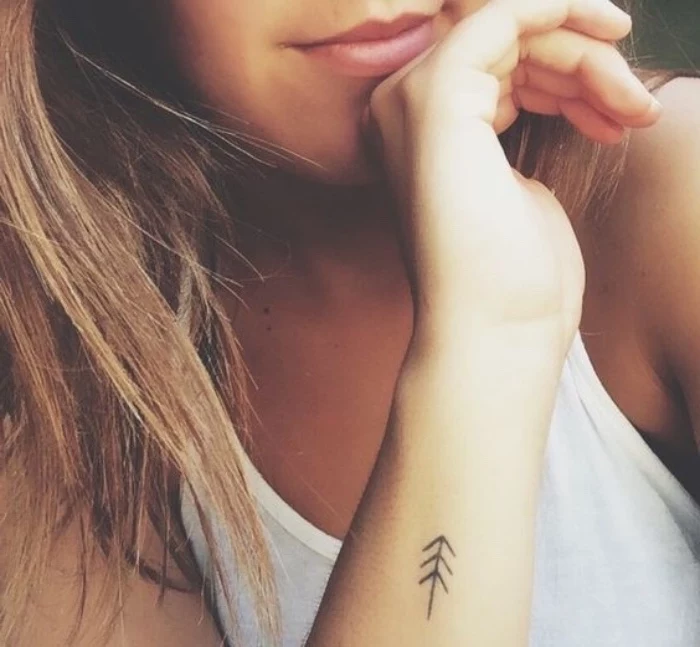
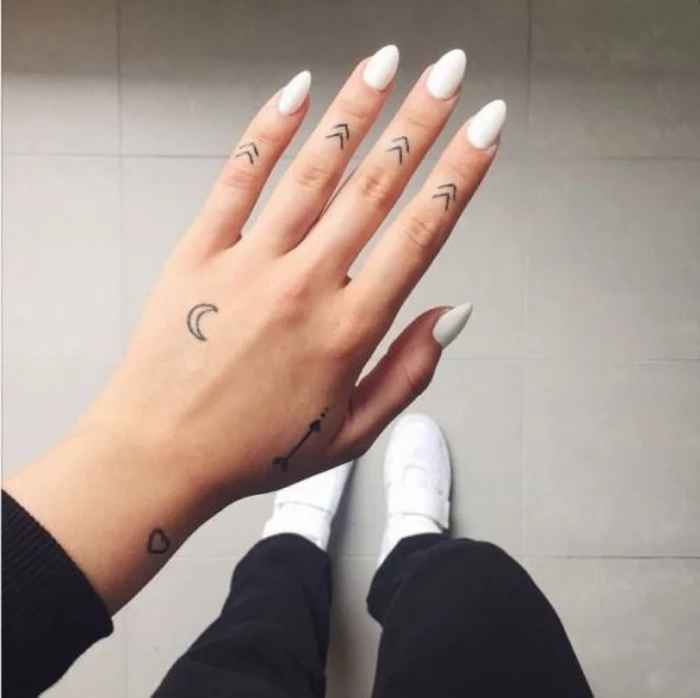
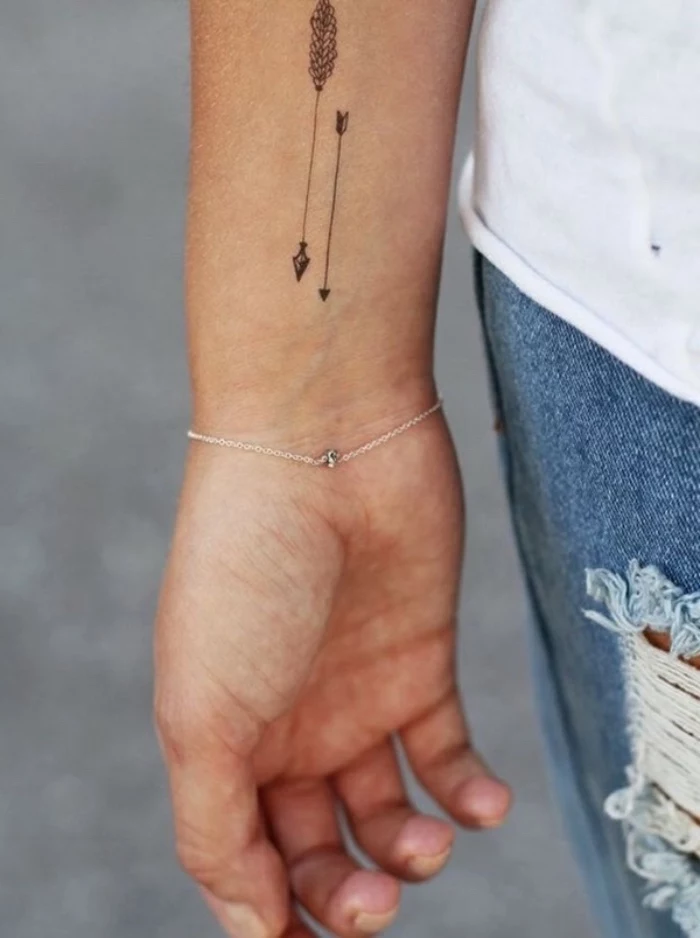
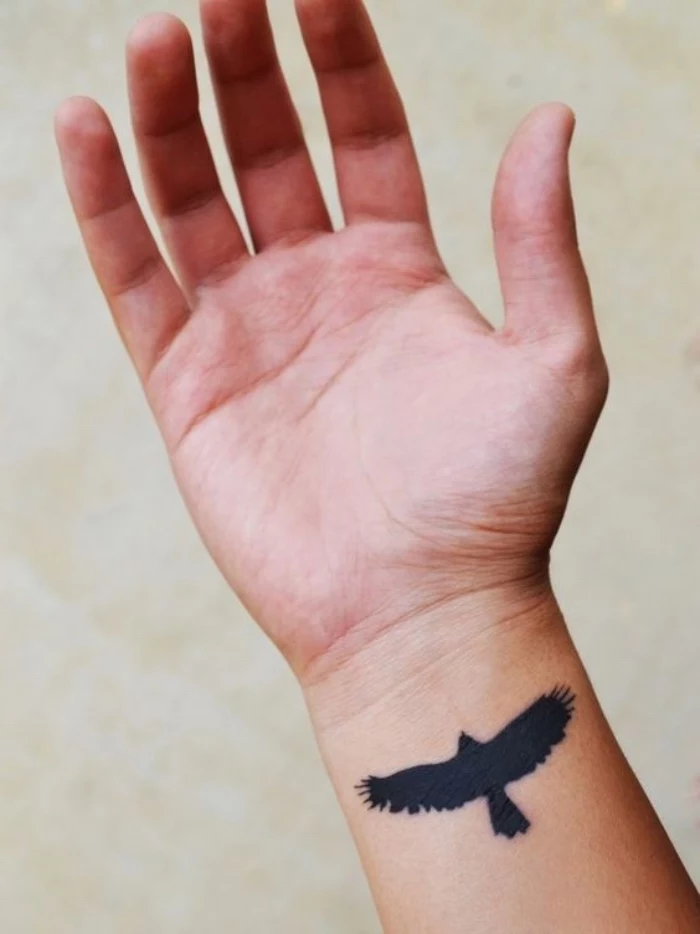
Even the sharpest line is not immune to time. Tattoo artists often say that over a decade, a 1mm-thick line can naturally spread to become 2-3mm wide as the skin ages and ink particles slowly migrate.
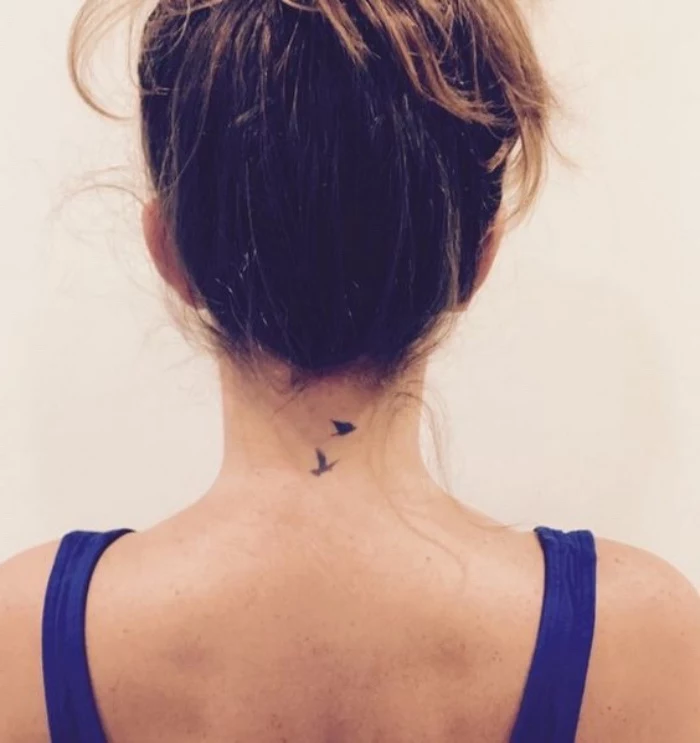
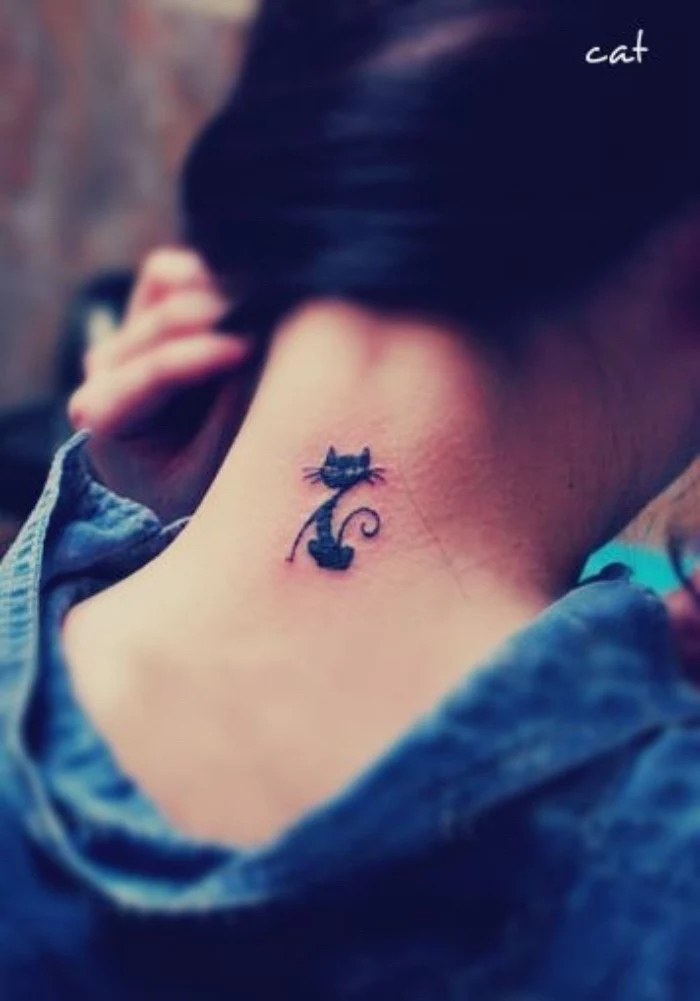
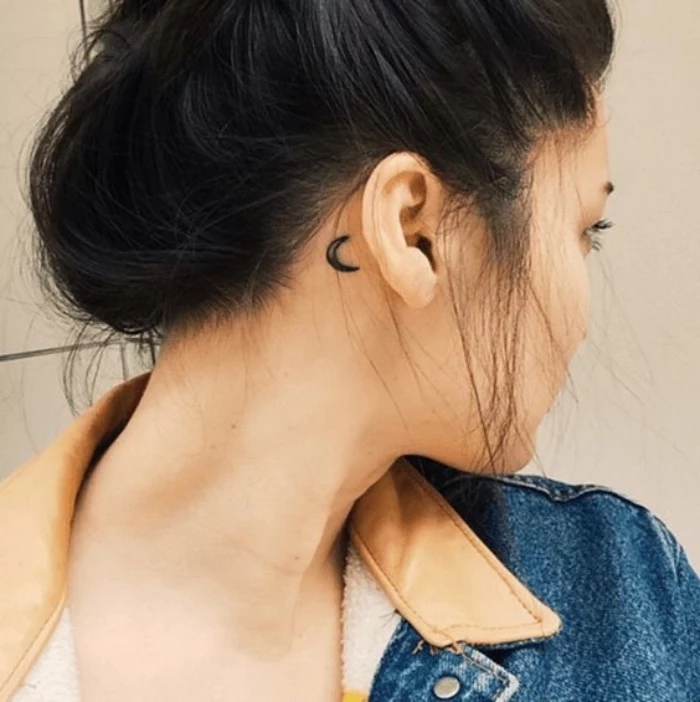
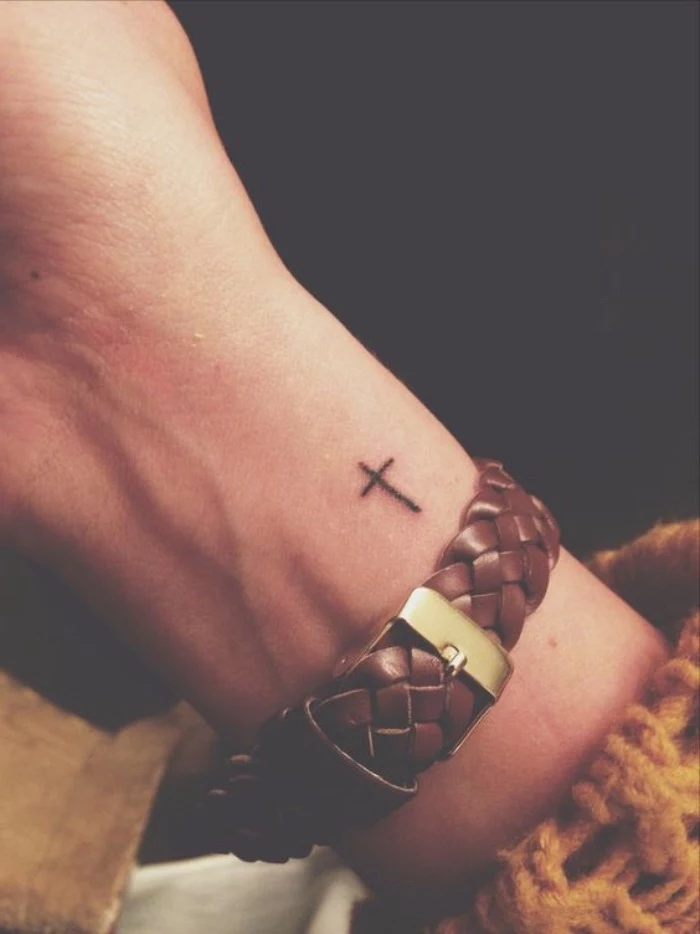
The Micro-Portrait Mistake: One of the biggest pitfalls is trying to cram too much detail into a tiny space. A realistic lion the size of a postage stamp might look incredible on day one, but in five years, those intricate details will blur into an unrecognizable smudge. For small pieces, simplicity is longevity.
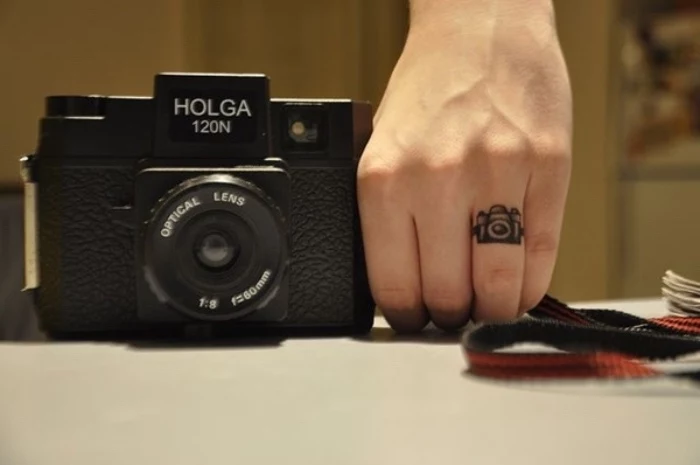
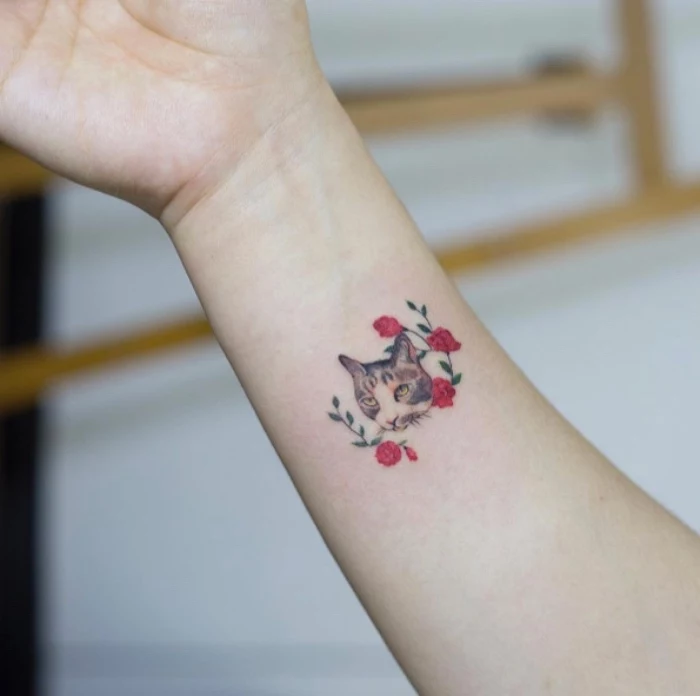
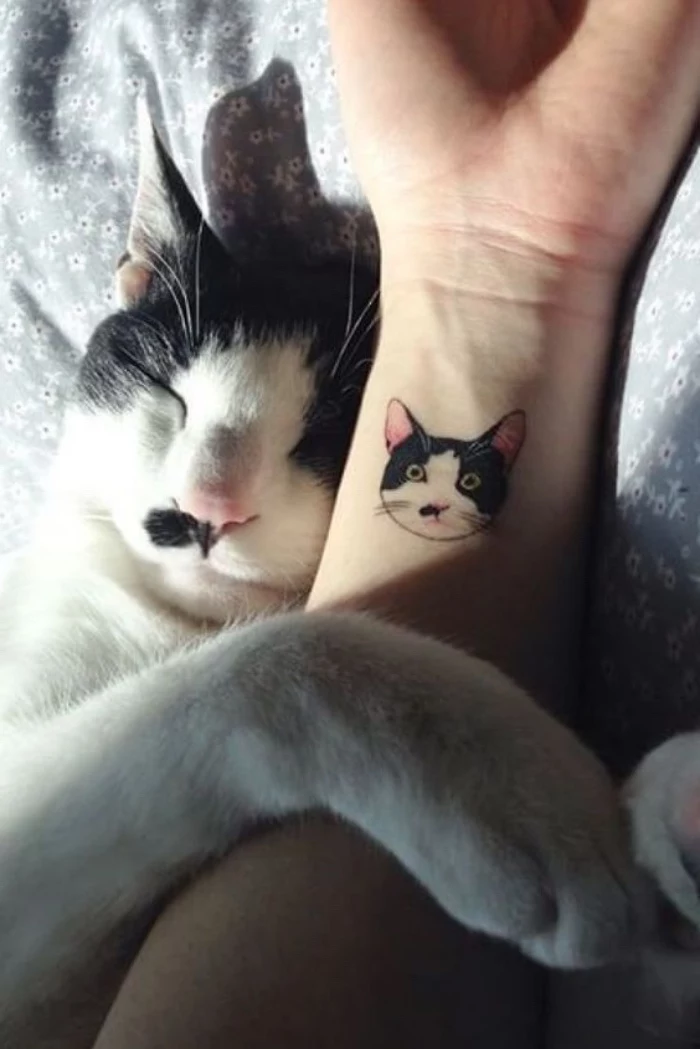
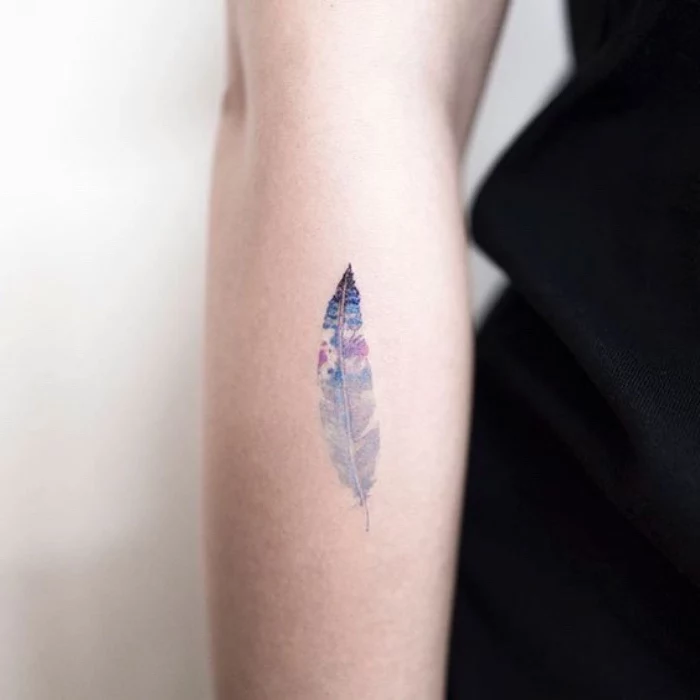
- Sunscreen is your tattoo’s best friend.
- Always use a broad-spectrum, SPF 30 or higher.
- Wait until the tattoo is fully healed (around 3-4 weeks) before applying any.
- A mineral-based sunscreen with zinc oxide is often less irritating on sensitive, newly tattooed skin.
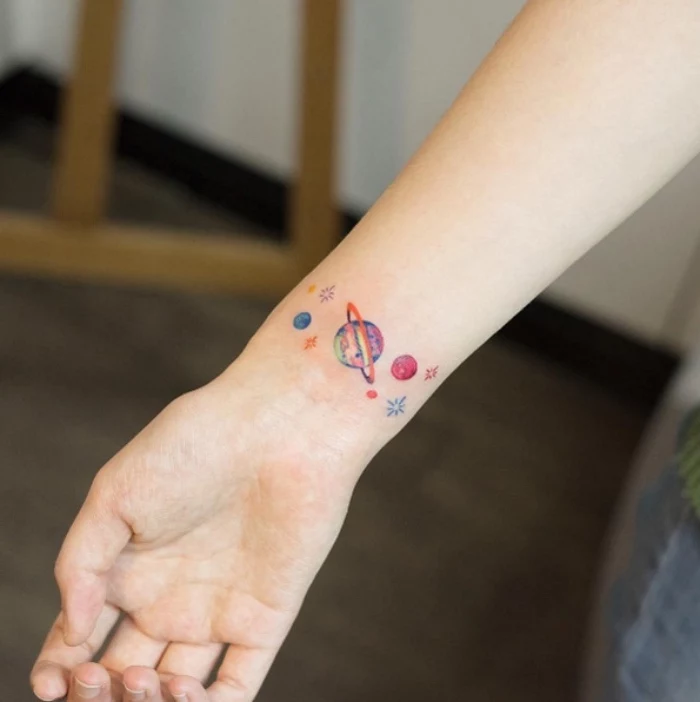
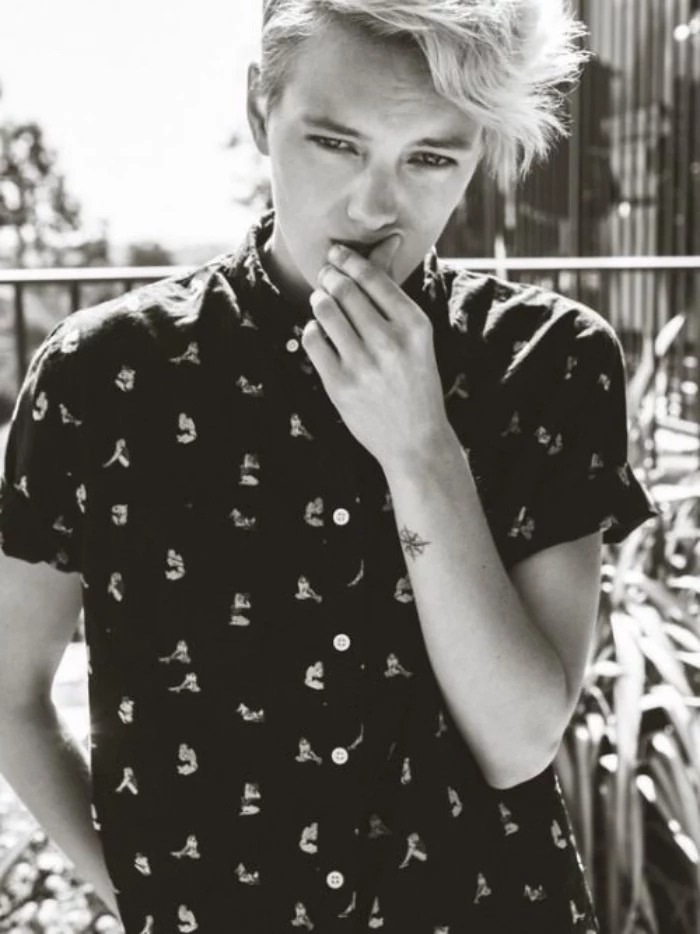
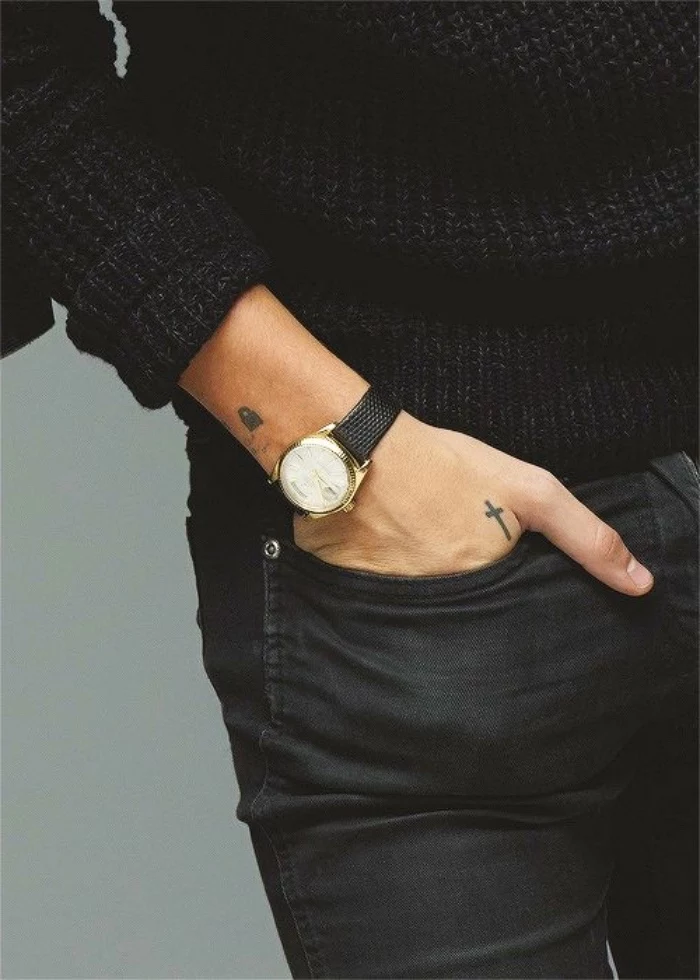
Is red ink a good choice for a small, delicate design?
While aesthetically striking, red ink has a reputation for being more prone to fading with sun exposure and, for a small percentage of people, causing minor allergic reactions or healing difficulties. Black ink is carbon-based and universally considered the most stable and long-lasting option, making it the safest bet for a tiny tattoo you want to stay crisp for years.
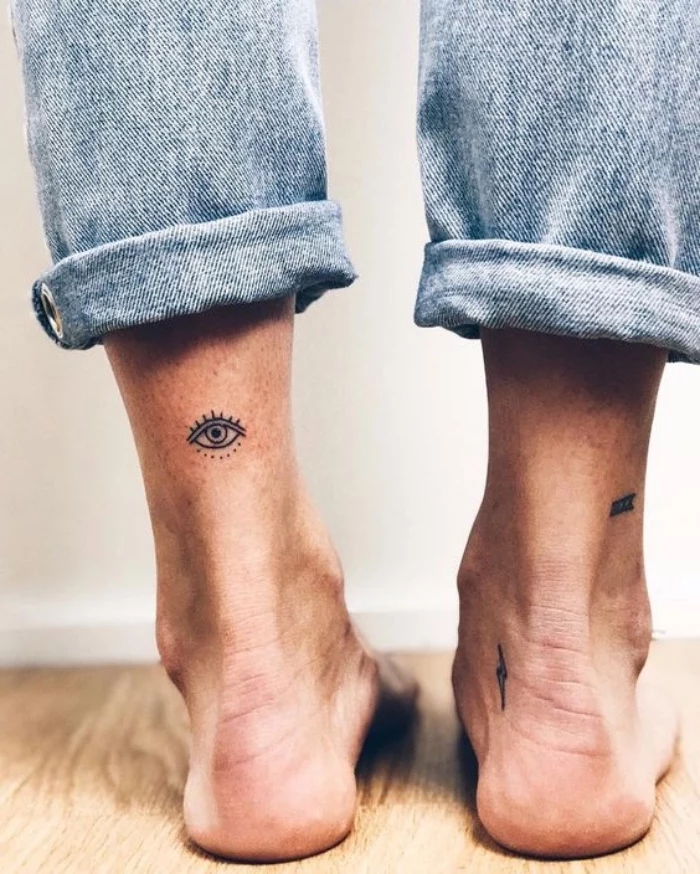
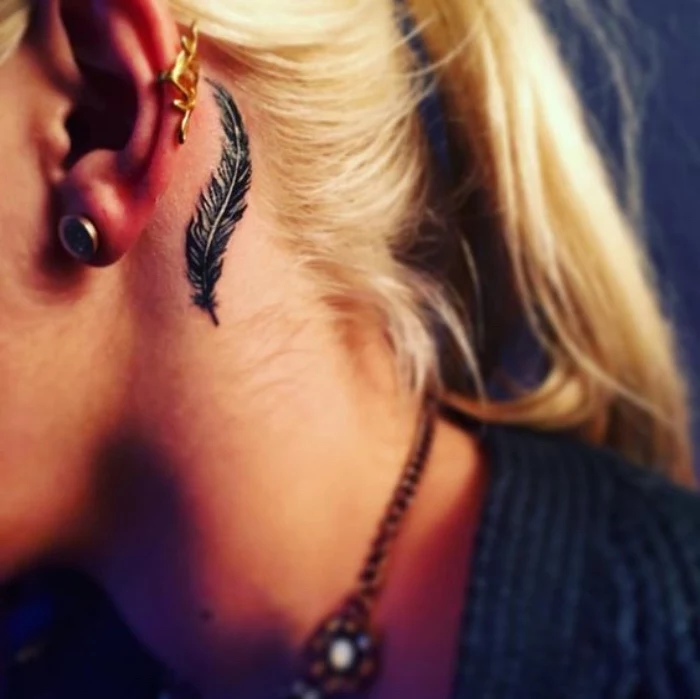
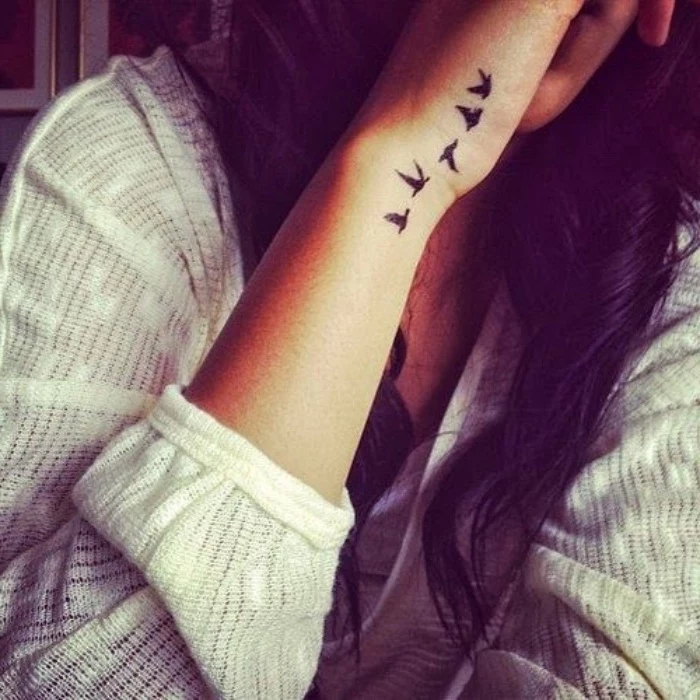
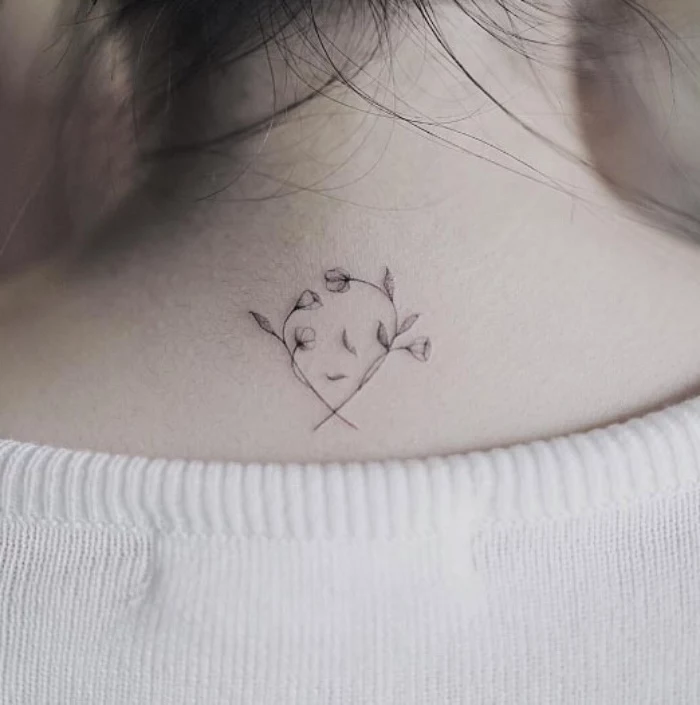
Flash: These are pre-drawn designs by the artist, often displayed in the studio. They’re typically priced at a set rate and can be a more affordable way to get work from an artist you love.
Custom: This is a design created from scratch just for you. It involves consultation and drawing time, making it more expensive but entirely unique. For a personal symbol, custom is the way to go.

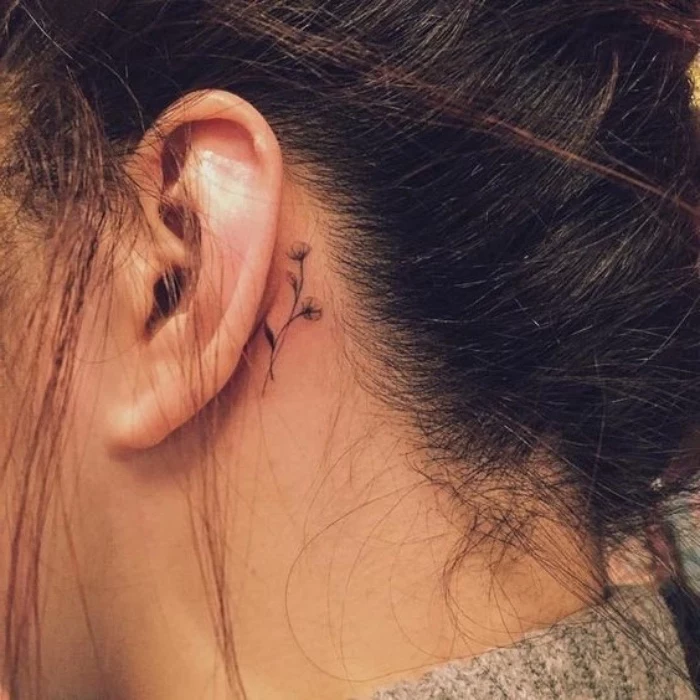
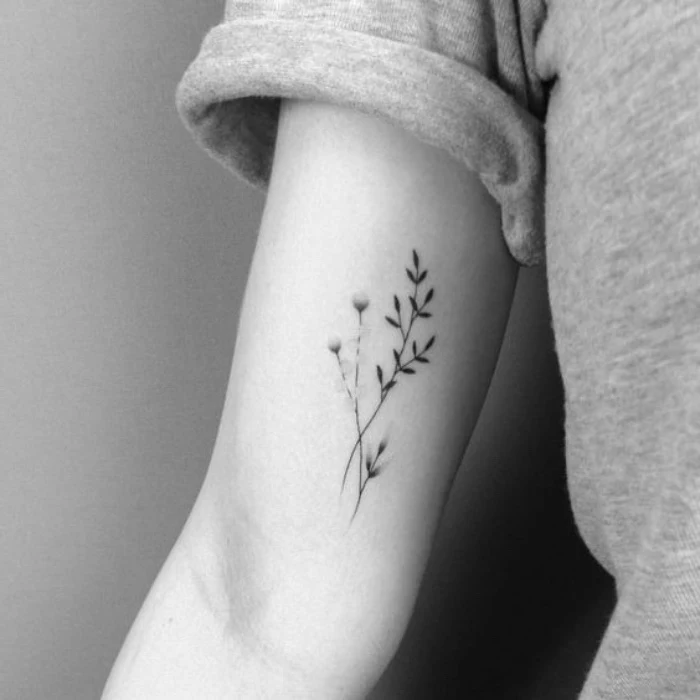
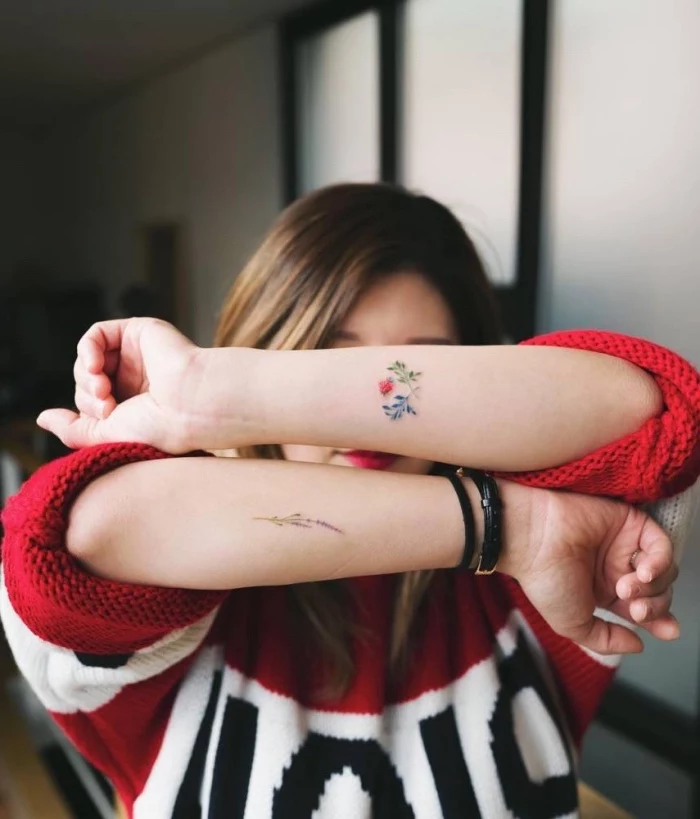
A ‘single needle’ used for the most delicate tattoos is often just 0.20mm to 0.25mm in diameter.
That’s about the thickness of a human hair. It allows for incredible precision but also means the artist must have an exceptionally steady hand and perfect depth control. Unlike a thicker needle grouping that carves a solid path, a single needle gently deposits a fine chain of ink dots into the dermis.
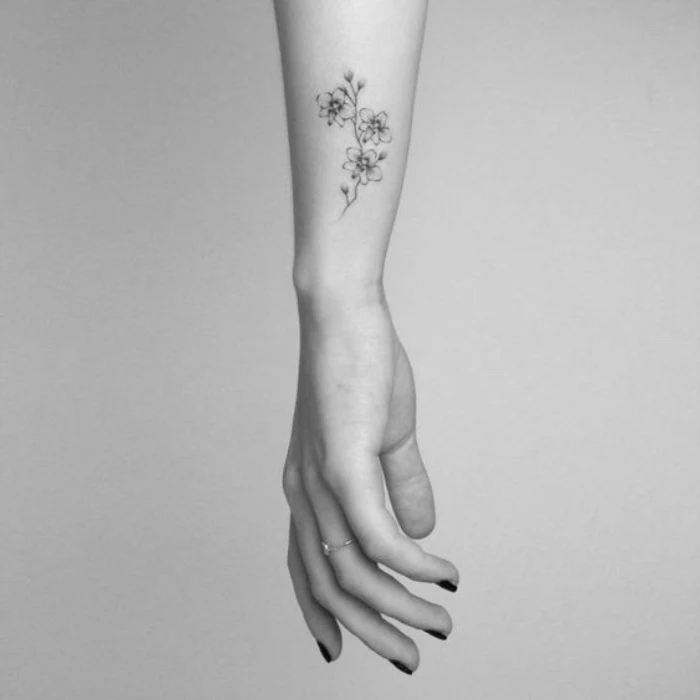
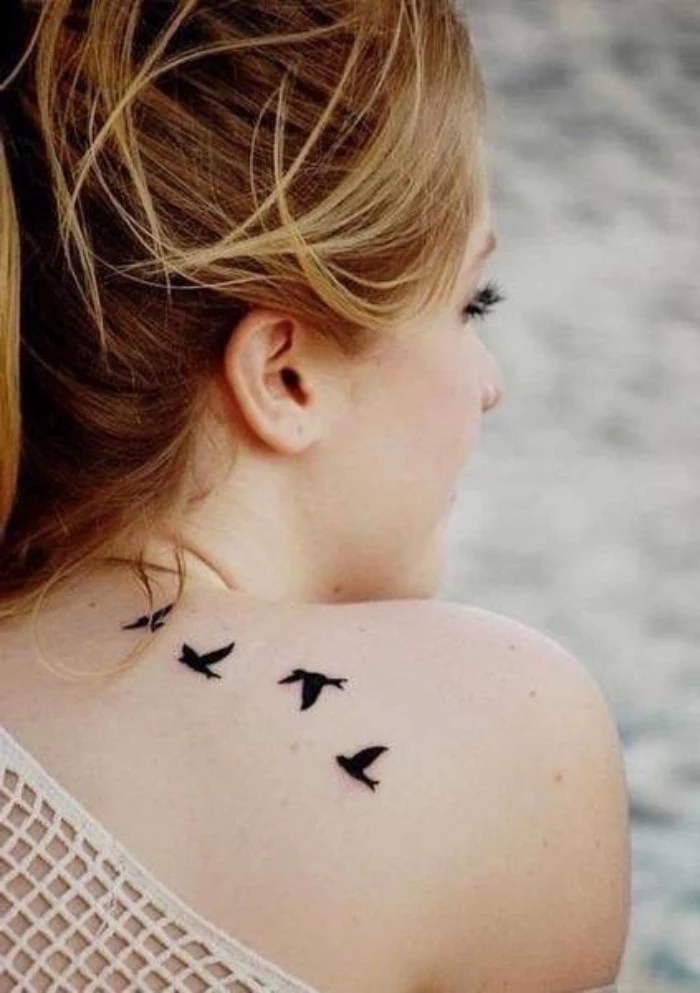
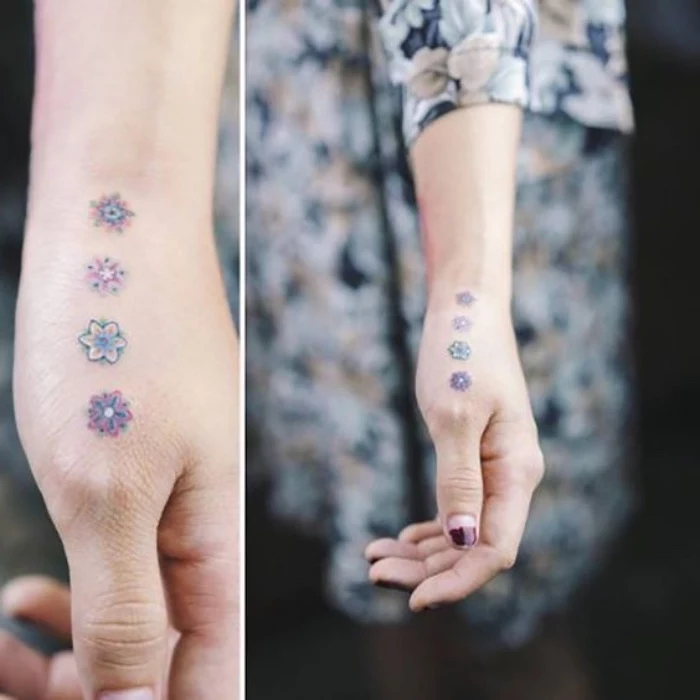
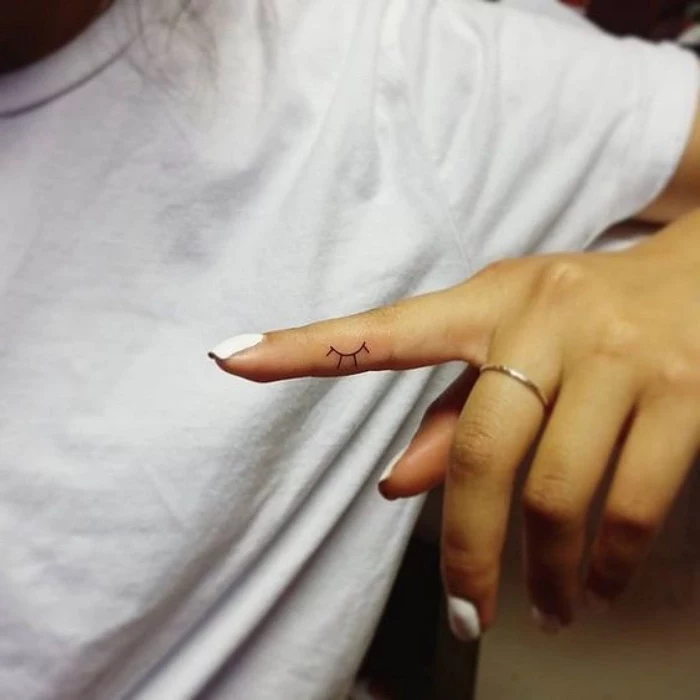
- They remain legible from a distance.
- They hold their shape for decades.
- They are less prone to blurring or ‘falling out’.
The secret? An old tattooist adage:
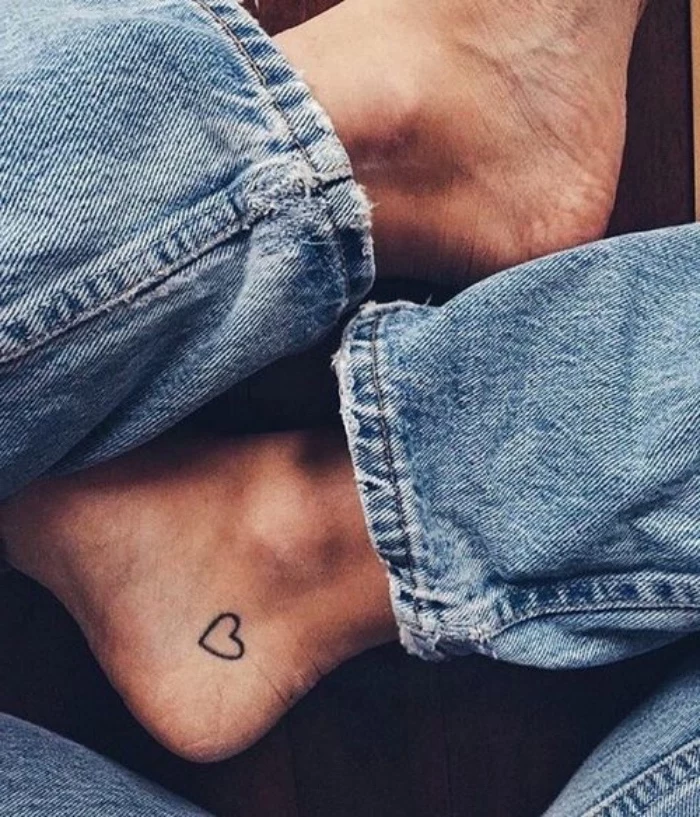
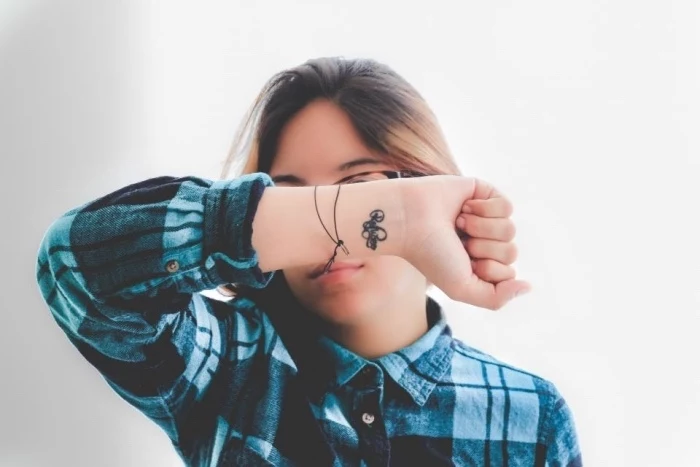
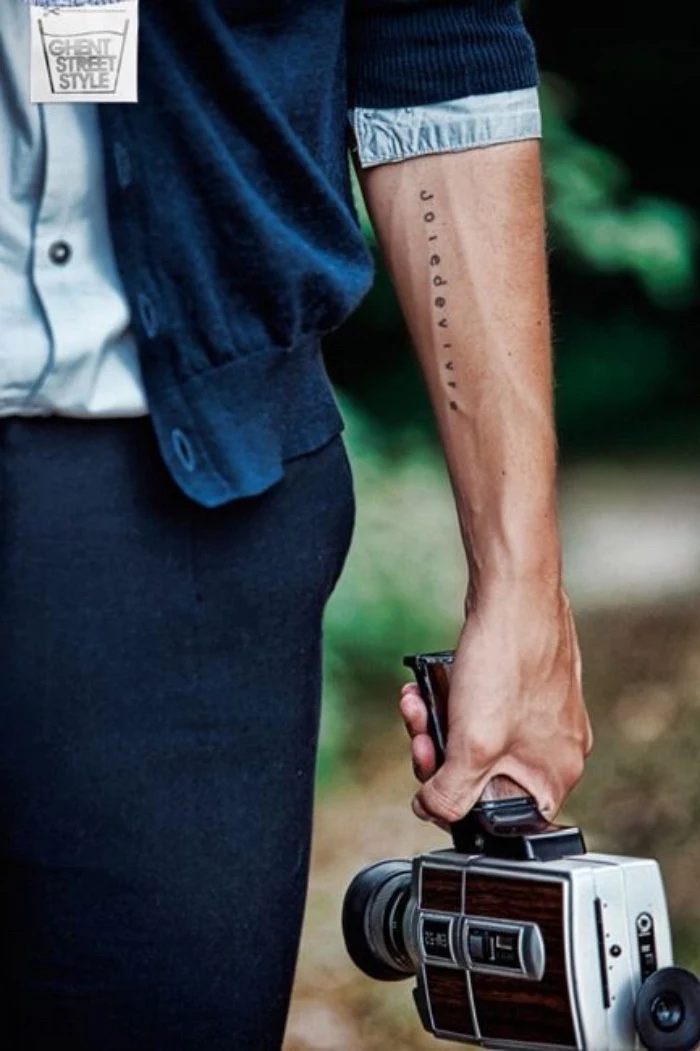
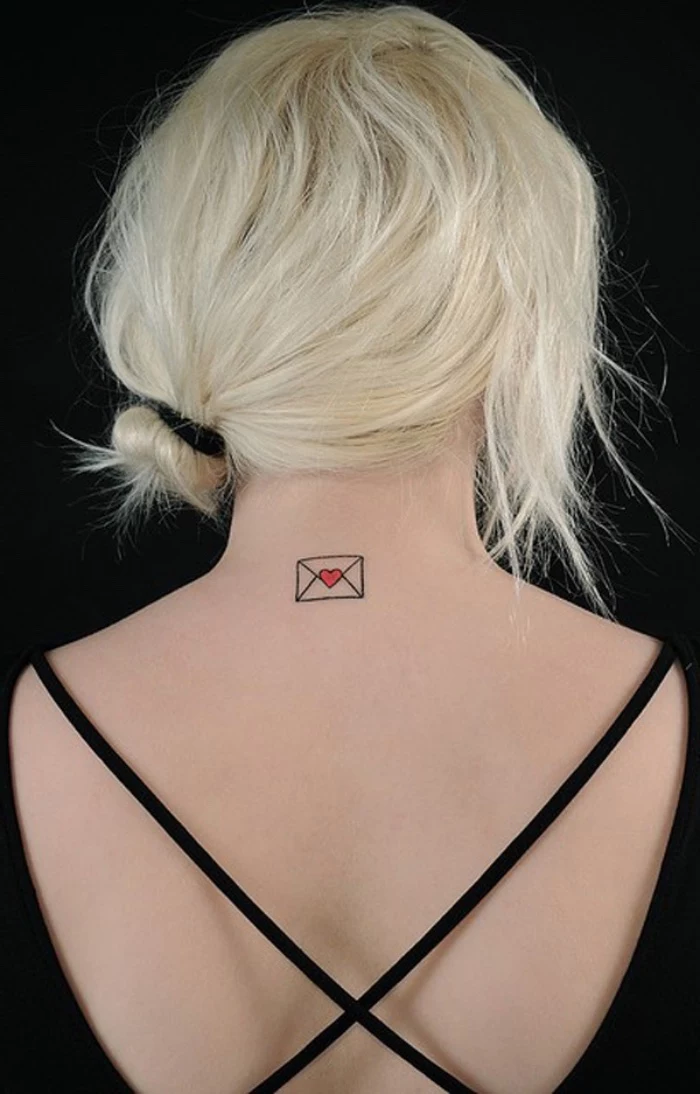
Certain body parts are considered high-motion or high-friction zones, which can cause a small tattoo to fade or blur much faster. Think twice or, at the very least, have a serious talk with your artist about longevity in these spots:
- Fingers (especially the sides) and palms
- Feet (soles, sides, and near the ankle bone)
- Inner lip
- Elbows and knees
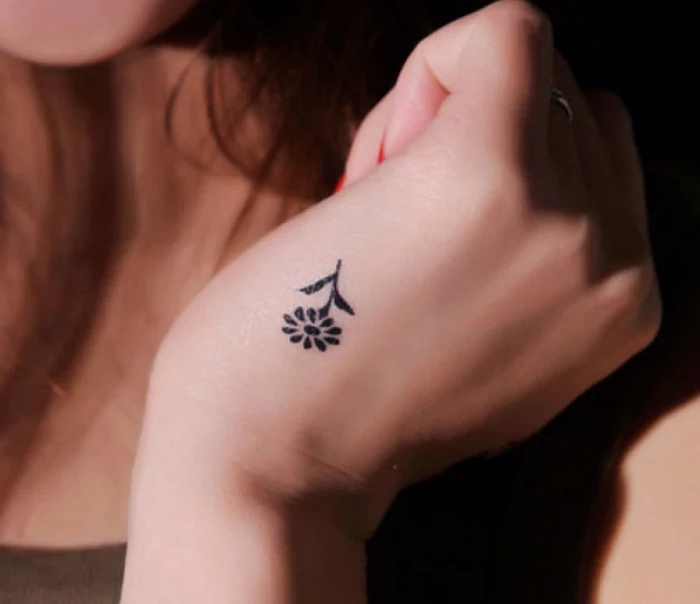
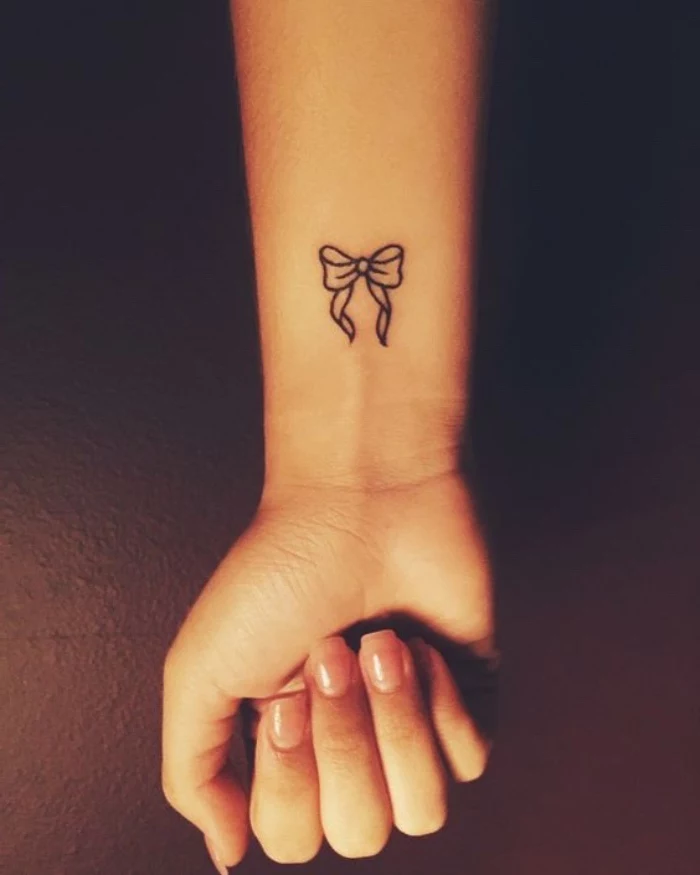
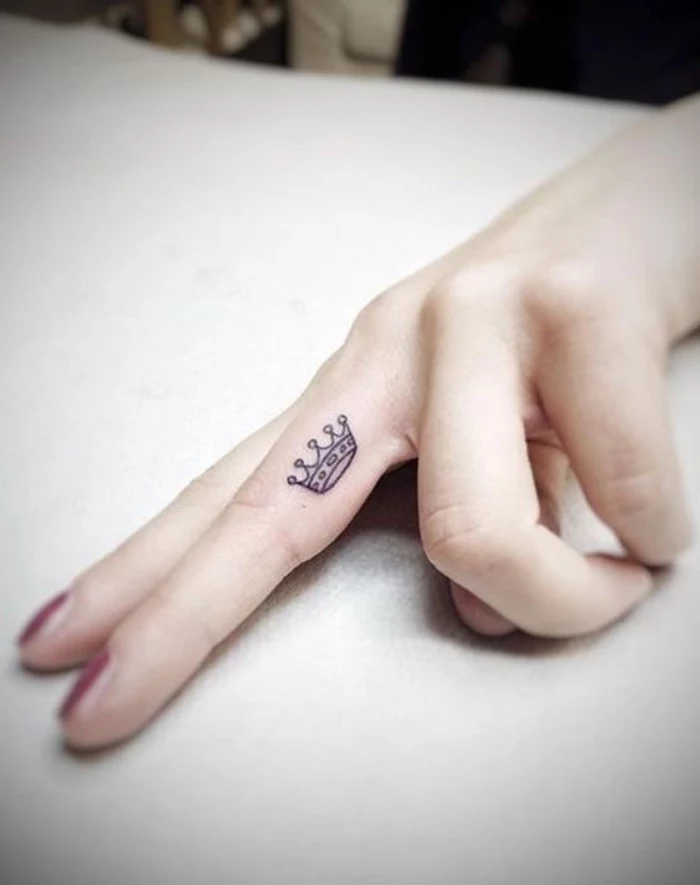
Don’t panic about
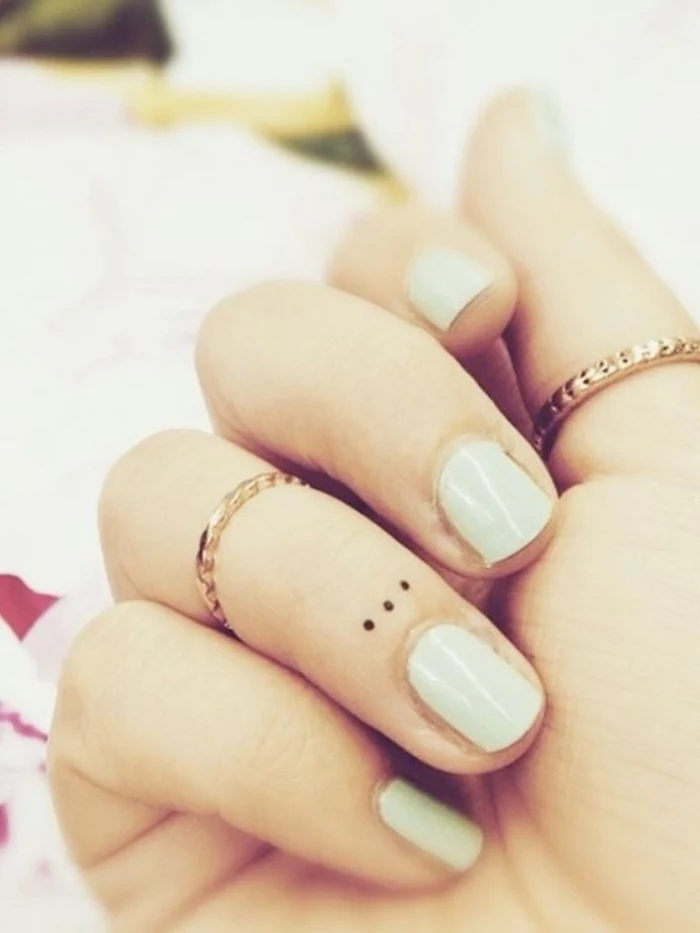
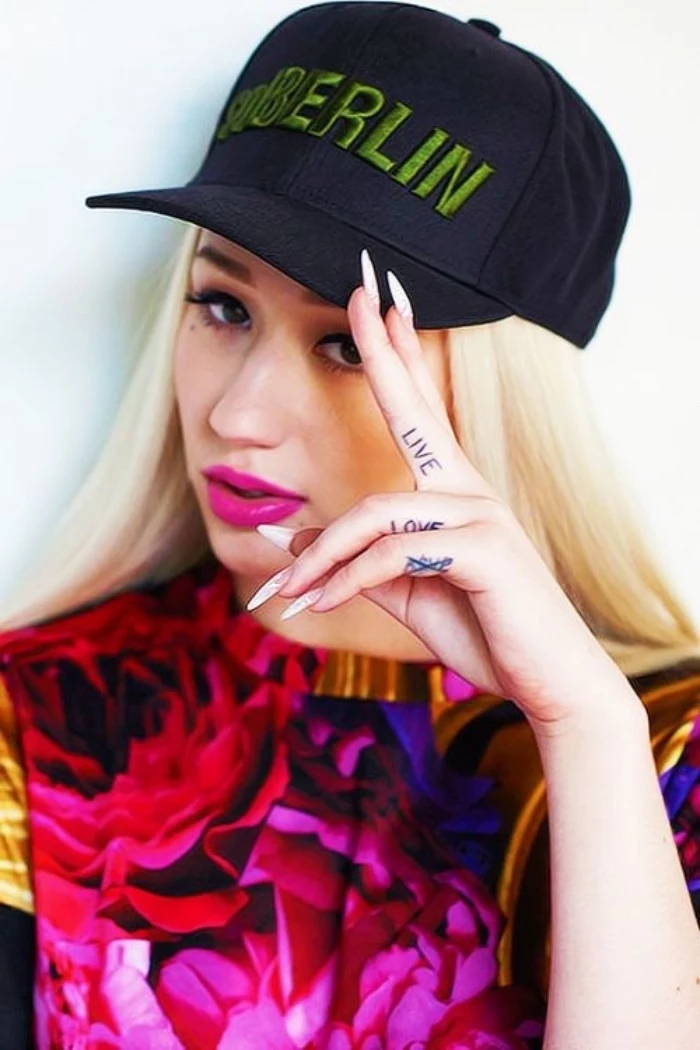
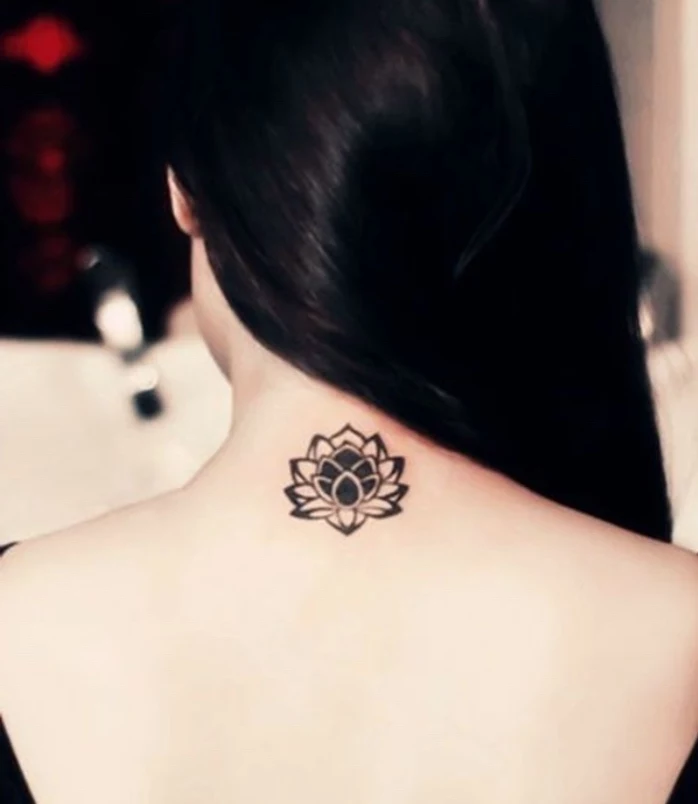
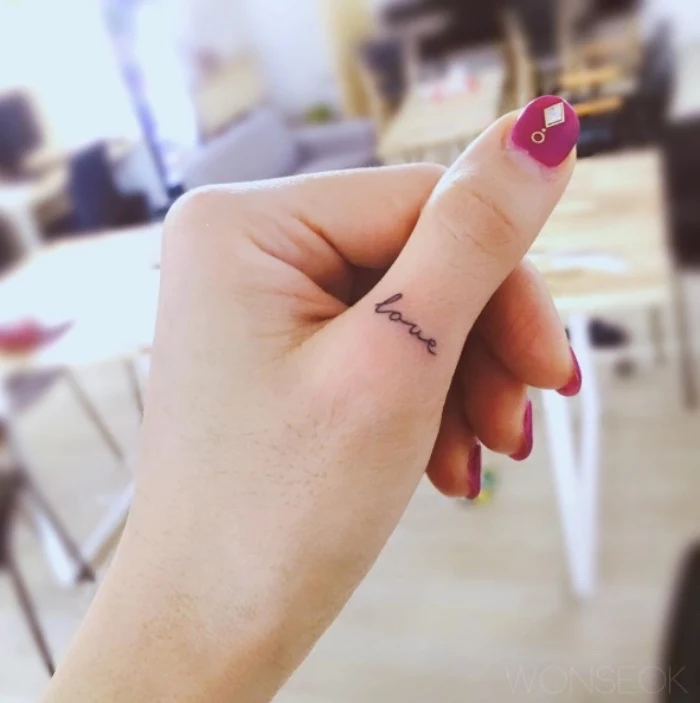
Your tattoo isn’t truly finished until after the touch-up. Most artists offer a free touch-up session within a few months. It’s a crucial step for fine-line work, allowing the artist to perfect any lines that may have healed lightly or correct any small imperfections that appeared during the healing process.
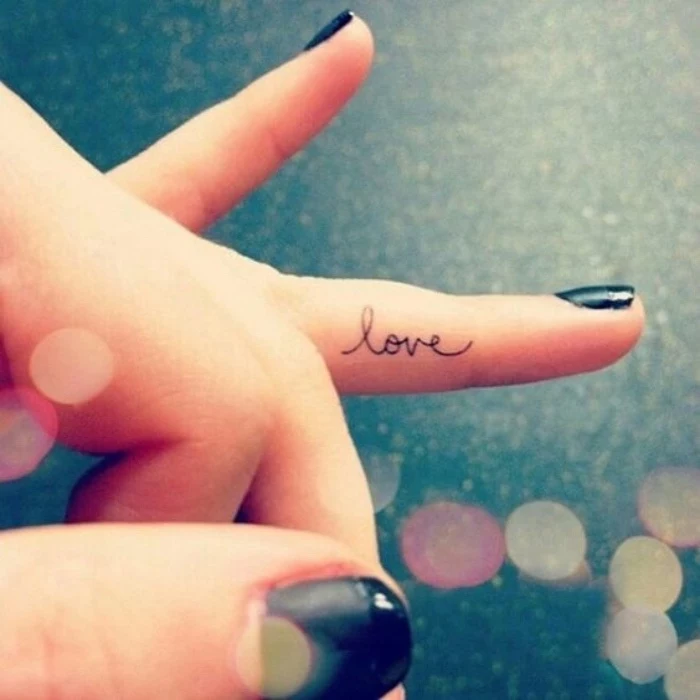
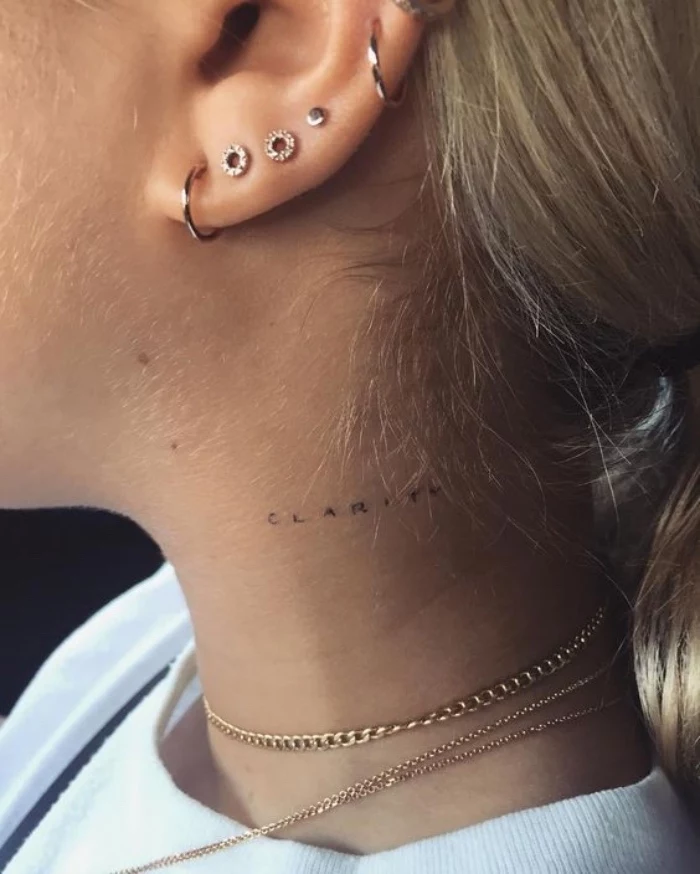
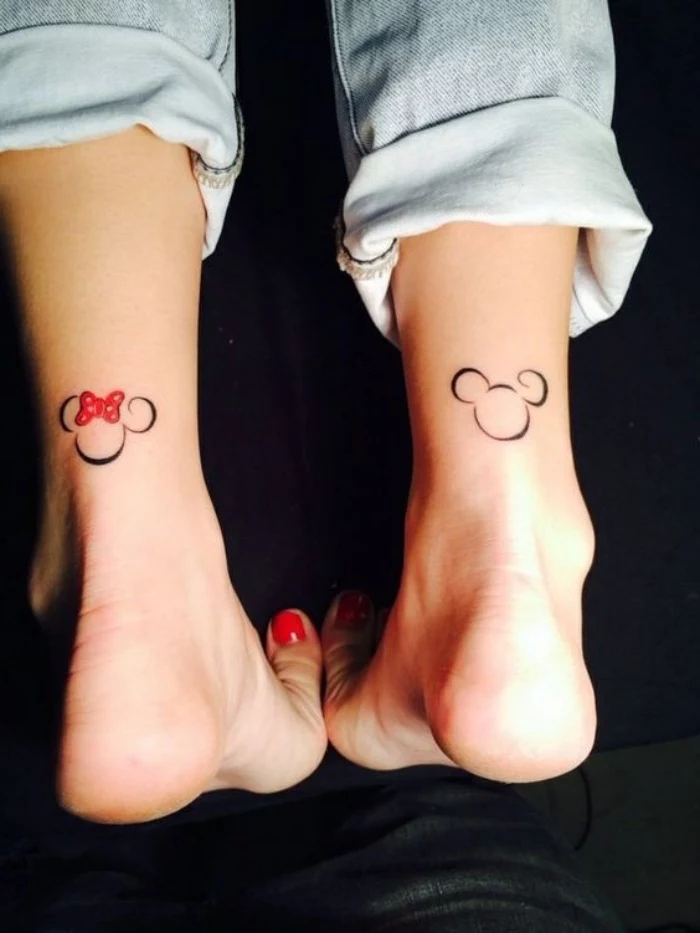
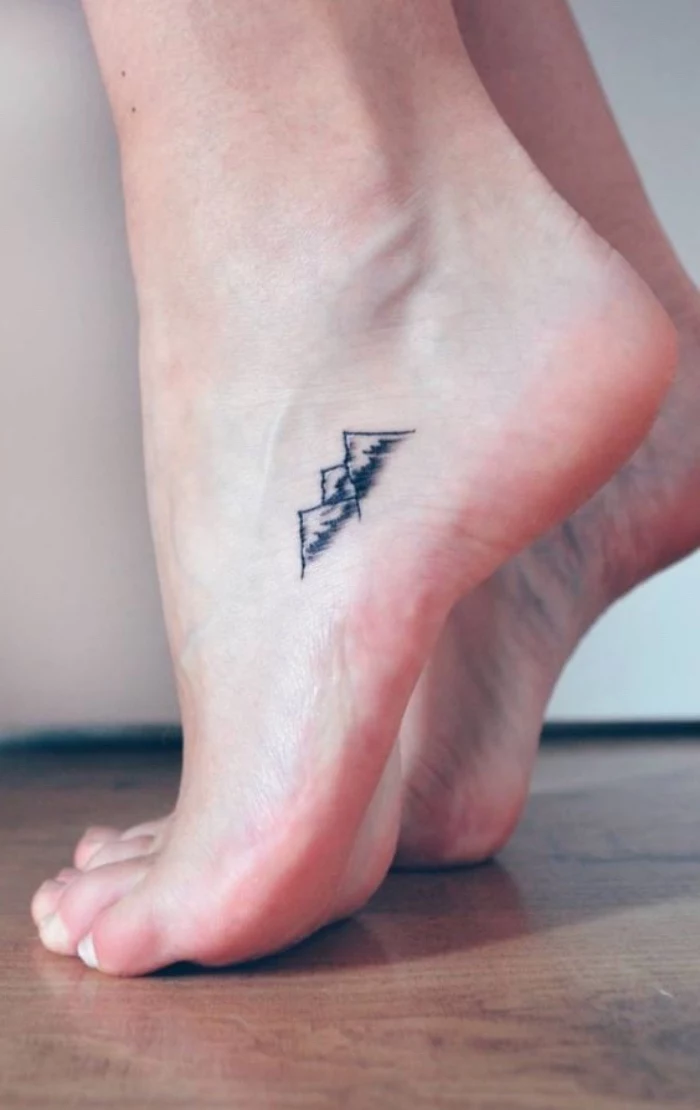
Planning to get your first tiny tattoo?
To ensure you and your artist are on the same page, consider asking them these questions during your consultation: How do you think this design will age over 10-15 years? Do you have photos of healed fine-line work you’ve done, not just fresh ones? Given my skin tone and the placement, are there any potential issues I should be aware of?

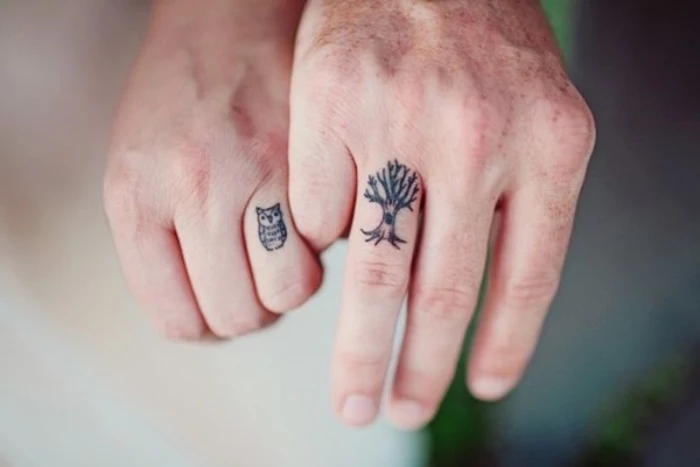
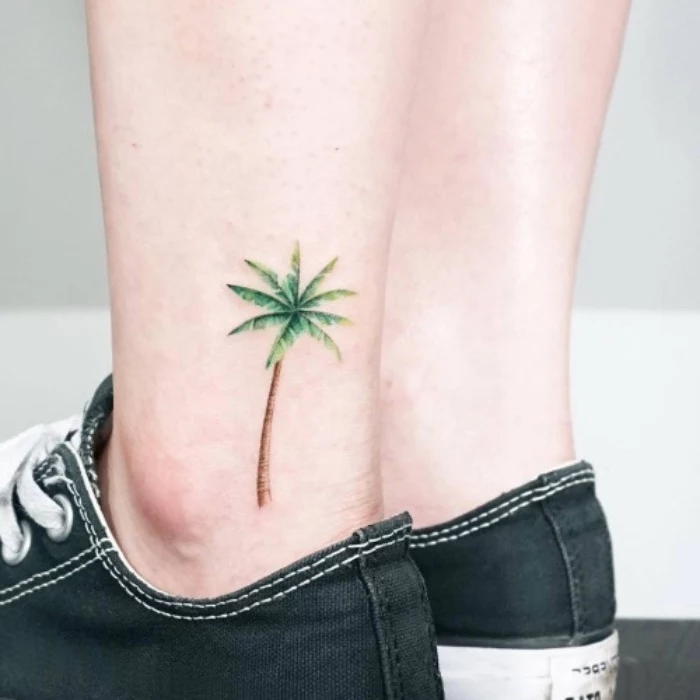
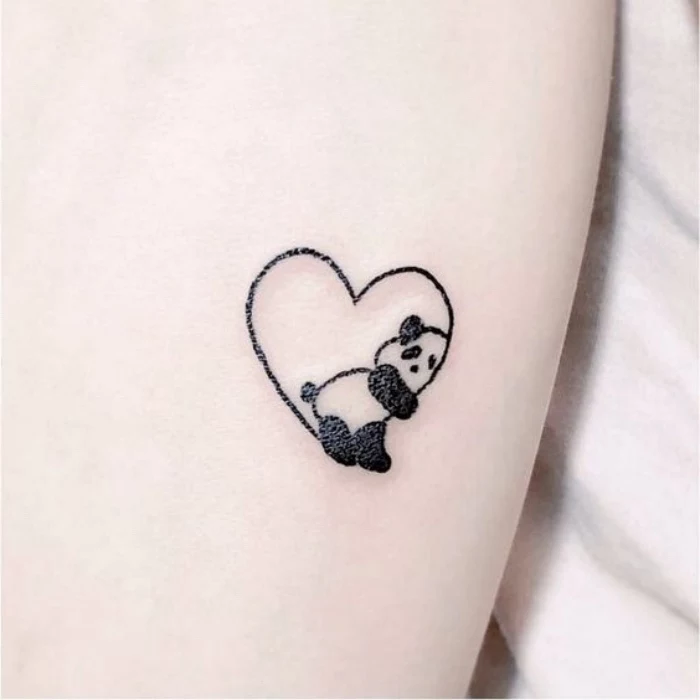
Mini-Comparison: Aftercare Balms
Aquaphor: A dermatologist-recommended classic. It’s a petroleum-based occlusive that creates a protective barrier. Very effective, but use a super thin layer.
Hustle Butter Deluxe: A popular vegan alternative. It uses natural butters like mango and shea. It’s non-petroleum and many find it feels less greasy and more soothing.
Both work well; the choice often comes down to personal preference for texture and ingredients.
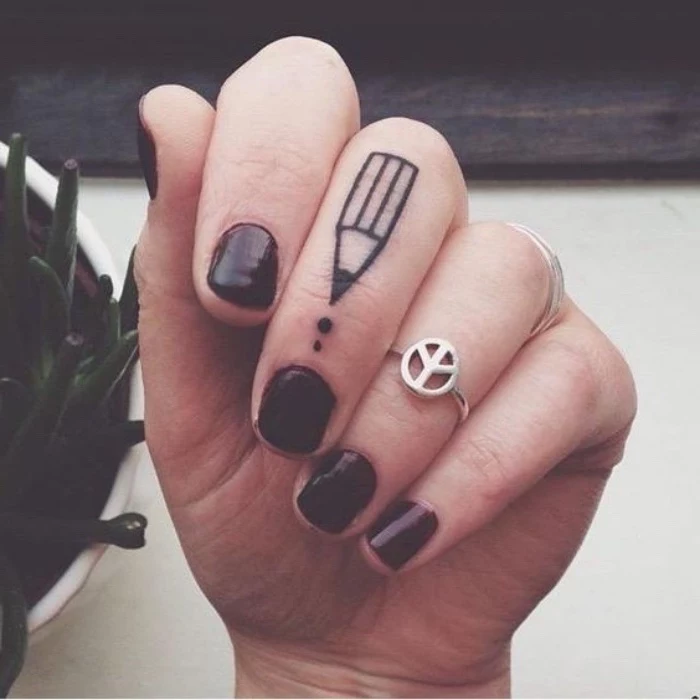
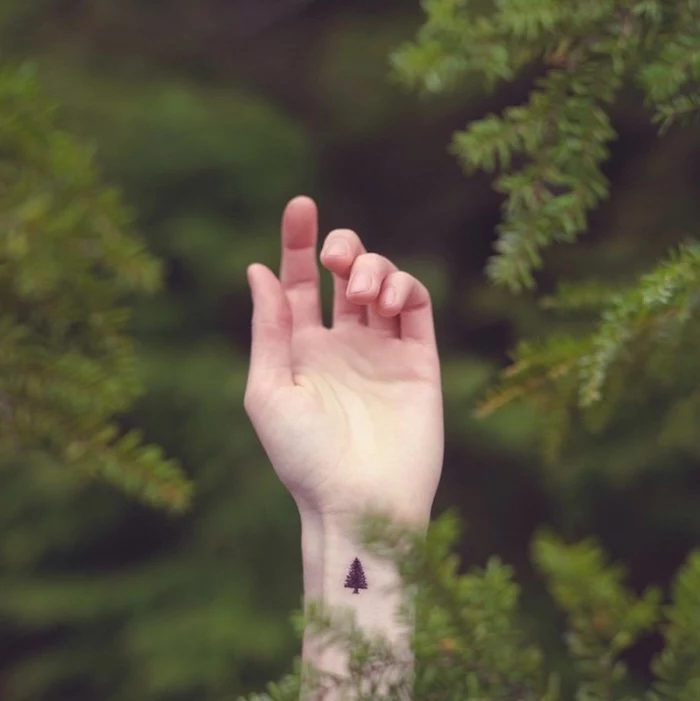
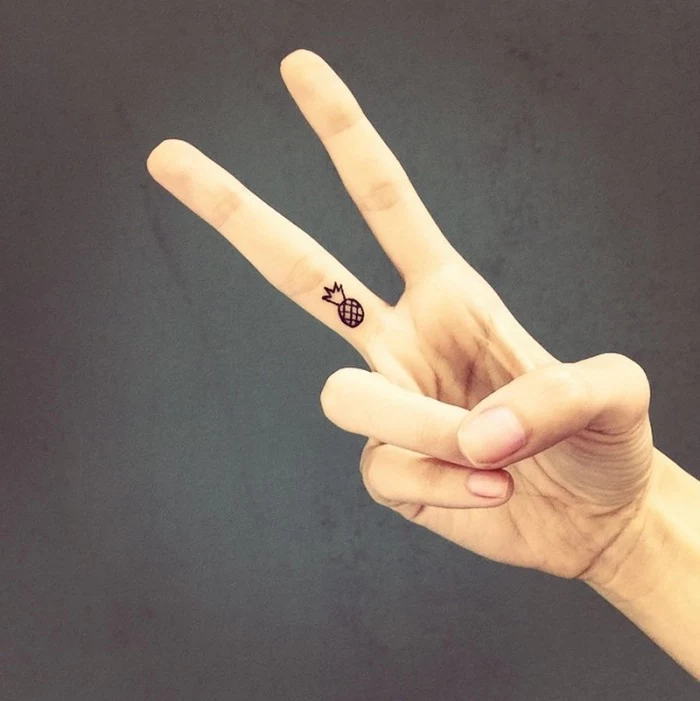
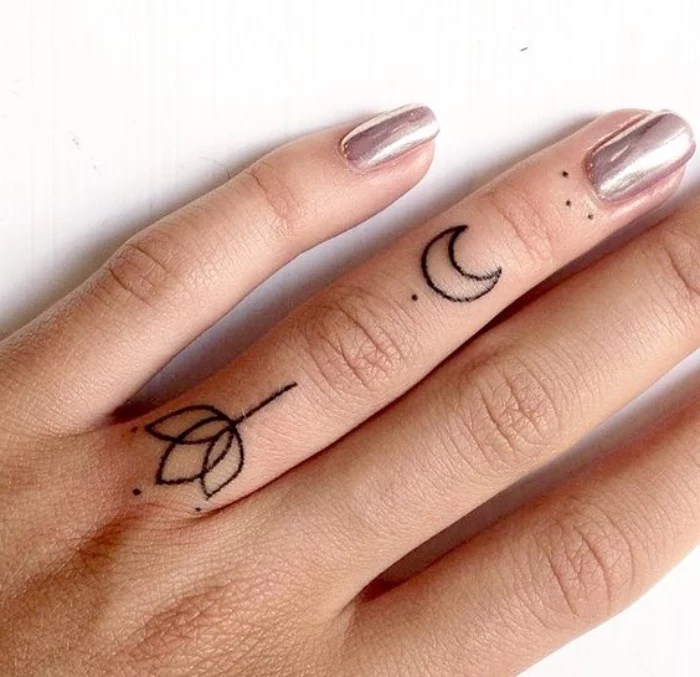
- Crisp, clear lines that hold their form.
- Intelligent use of negative space.
- A design that flows with the body’s curves.
The key to achieving this isn’t just a skilled artist, but a design that’s created specifically to age well. This means avoiding tiny, clustered details and favouring elegant, open compositions.
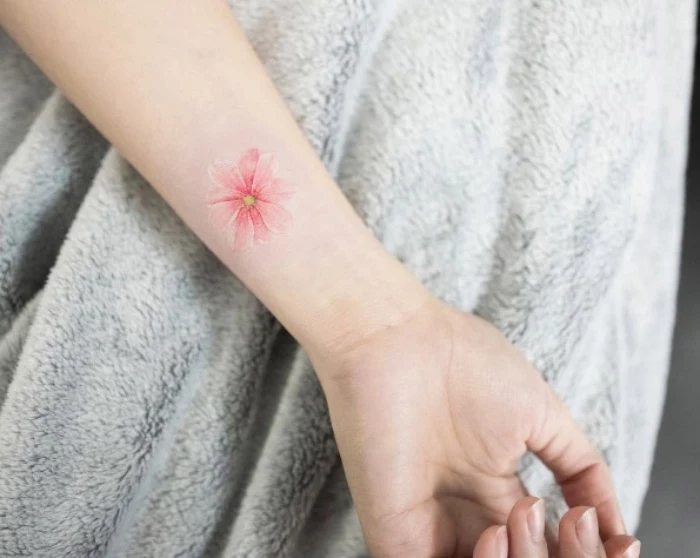
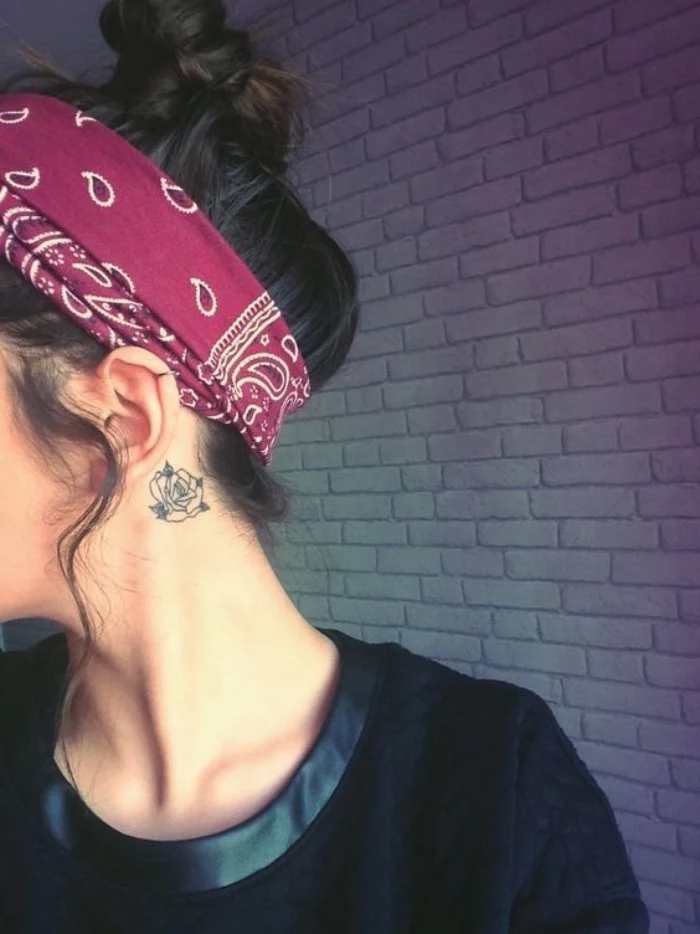
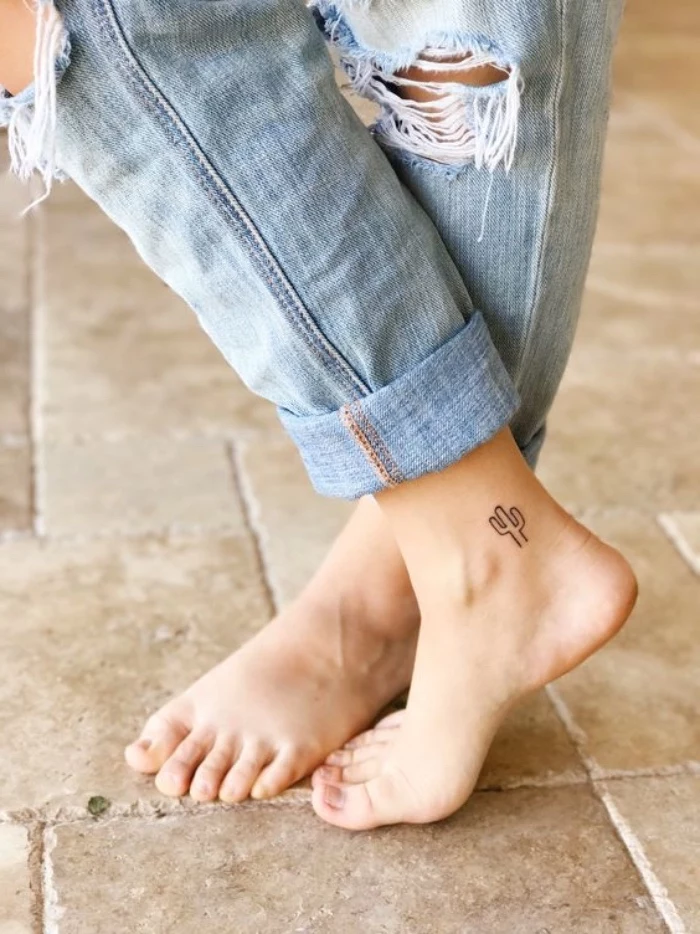
The price of a small tattoo can be confusing. Why does a tiny heart cost a minimum of $100? You’re not just paying for the 10 minutes of tattooing. You’re paying for the artist’s years of experience, the sterile, single-use needle, high-quality ink, station setup and breakdown, and the studio’s overhead. Good tattoos aren’t cheap, and cheap tattoos are rarely good.
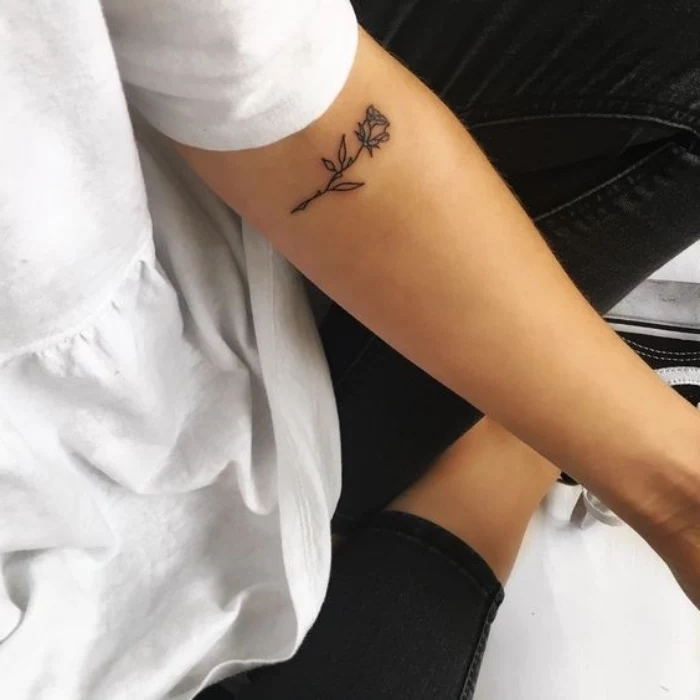
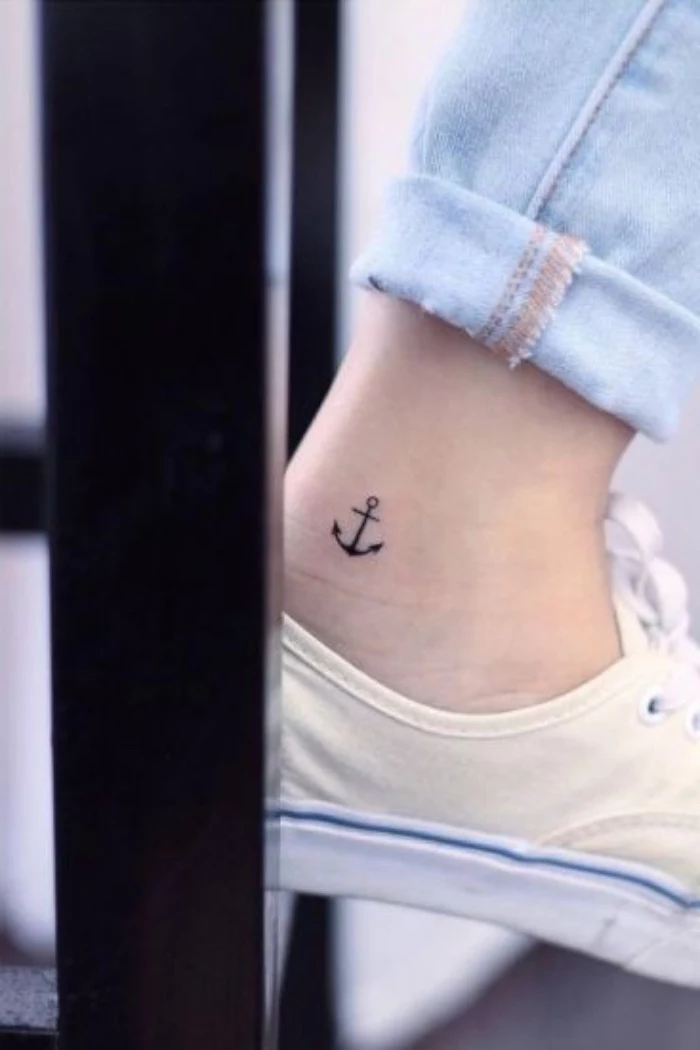
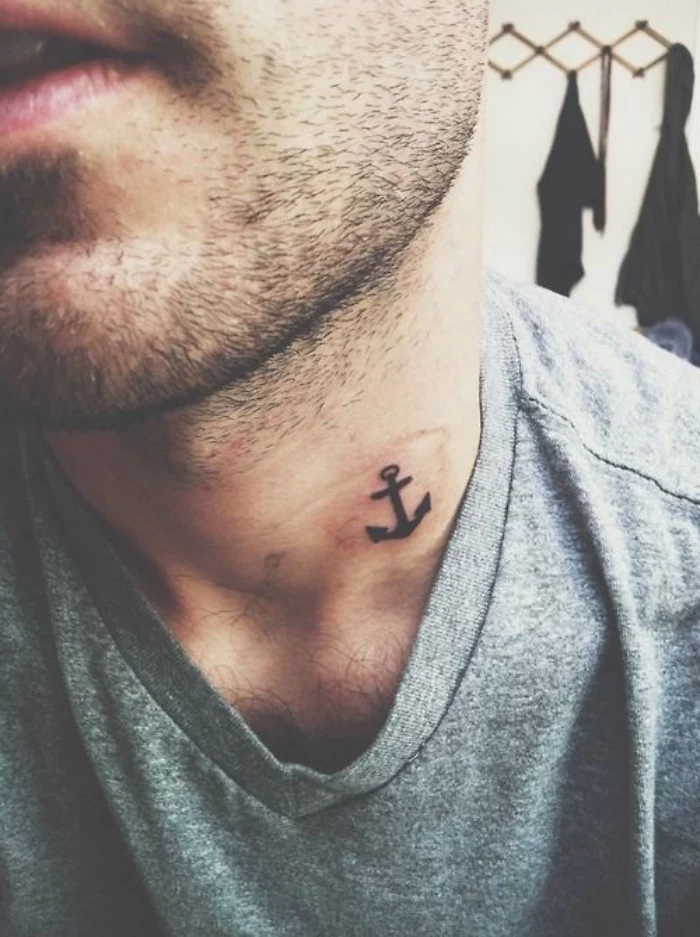

In a 2019 Dalia Research survey, 75% of respondents who regretted a tattoo said it was because they chose a design that was no longer meaningful to them.
This is especially true for small, trendy tattoos. Before you get that tiny infinity symbol or dandelion, ask yourself if it will still represent you in a decade. A personal symbol will always hold more power than a passing fad.
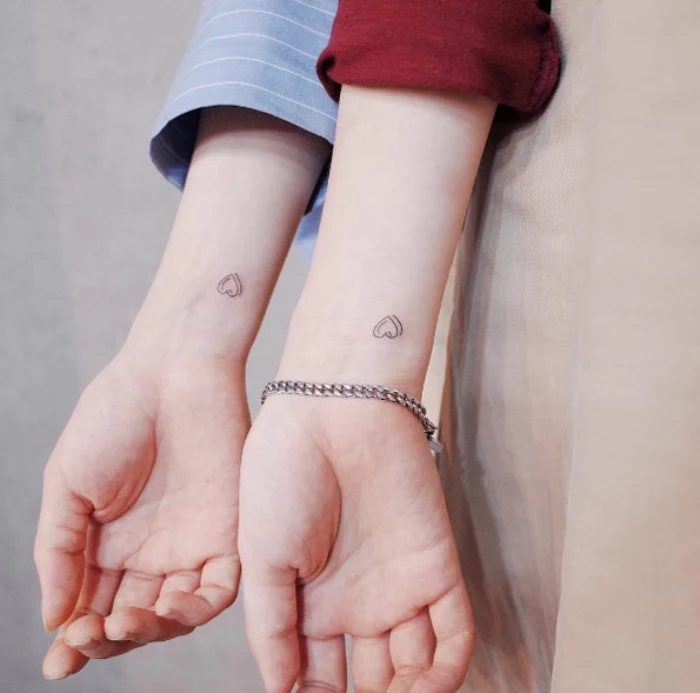

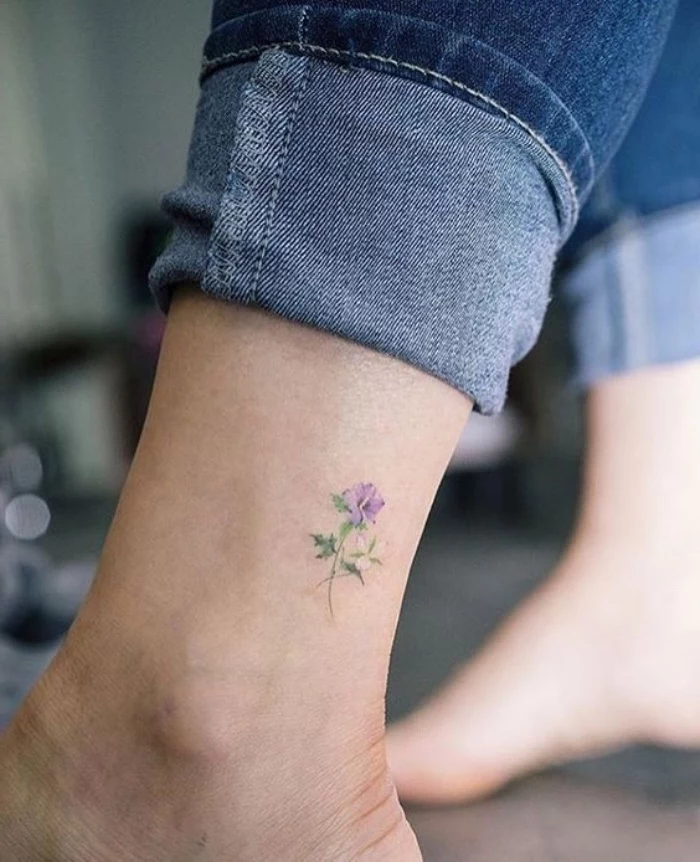
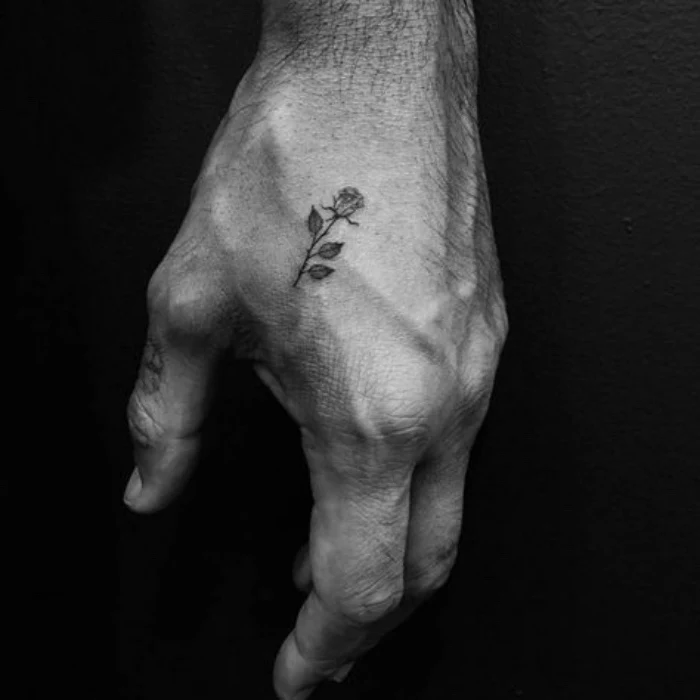
Want to test-drive a placement or design before committing? High-quality temporary tattoos have come a long way. Brands like Inkbox use a fruit-based, skin-safe formula that penetrates the top layer of skin, developing into a realistic dark-blue or black tattoo that lasts 1-2 weeks. It’s the perfect way to see how you feel with ink before it’s permanent.
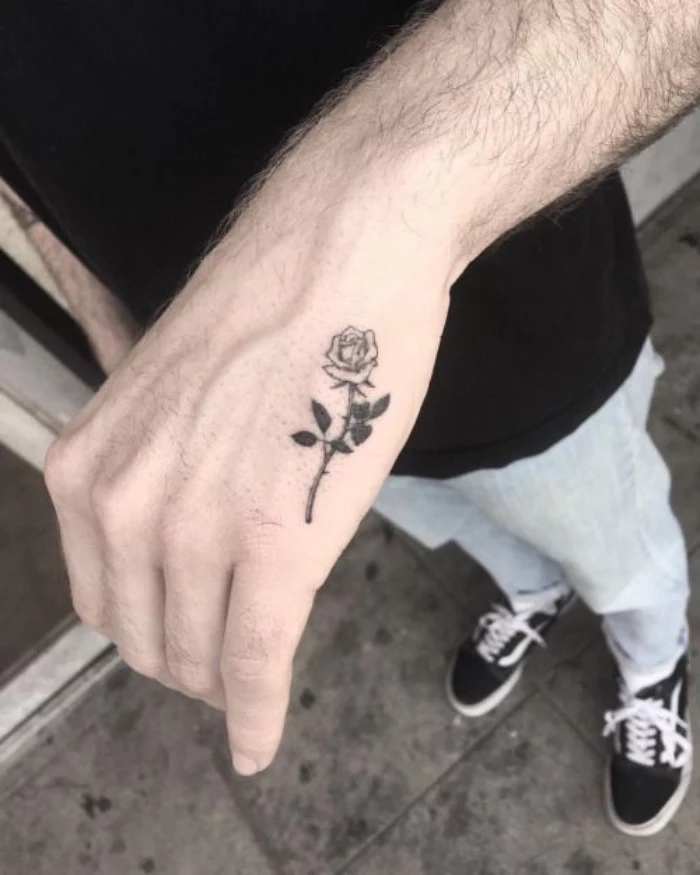
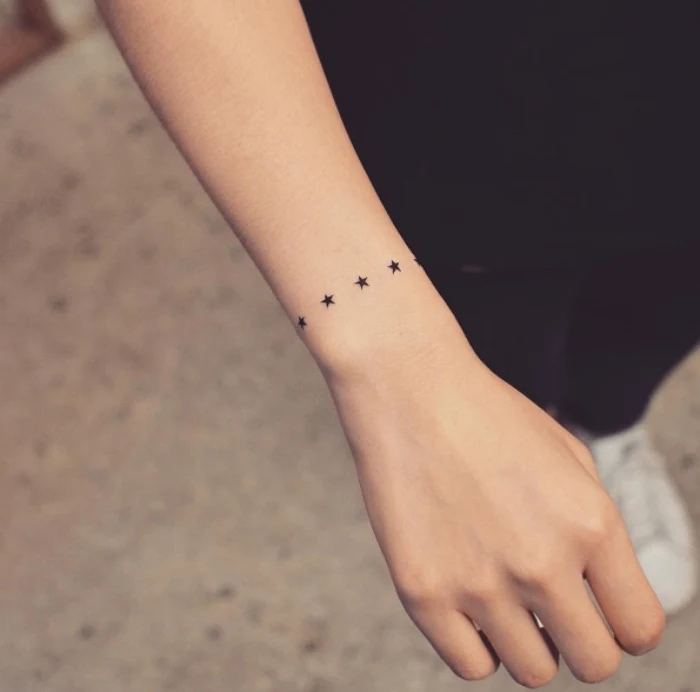
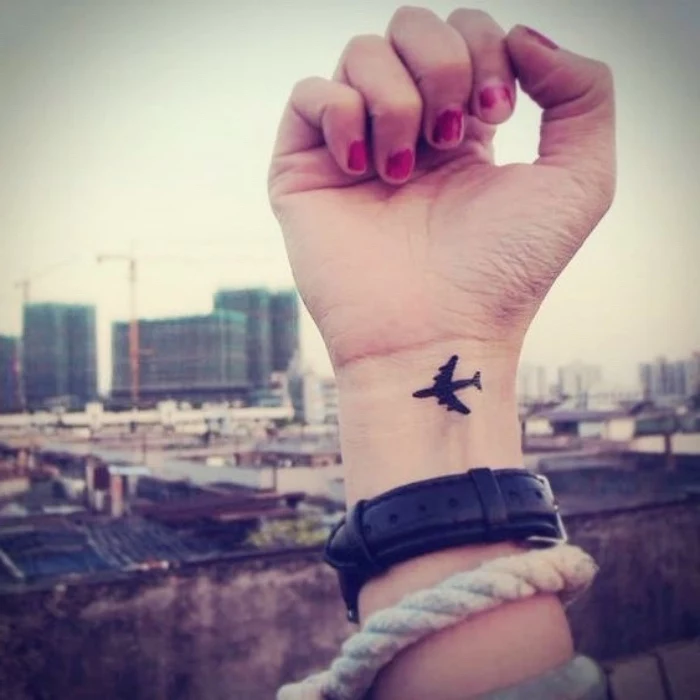
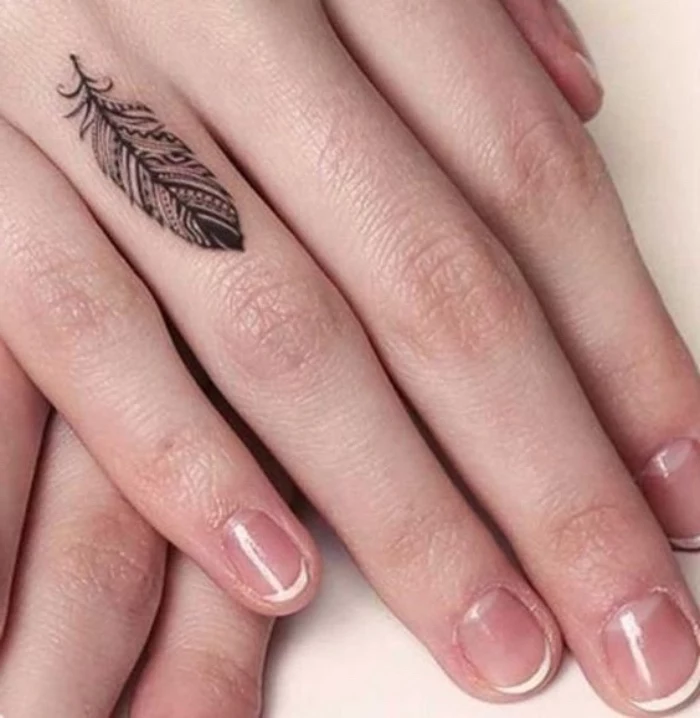
Will a small tattoo on my stomach or ribs stretch badly if I gain weight or get pregnant?
It’s a valid concern, but skin is incredibly elastic. For most small to moderate weight fluctuations, a tiny tattoo is unlikely to distort noticeably. A small symbol on the ribcage, for example, will often adapt with the body’s changes far better than a large, circular piece would. The key is placement; an artist can help you choose a spot that minimizes potential distortion.
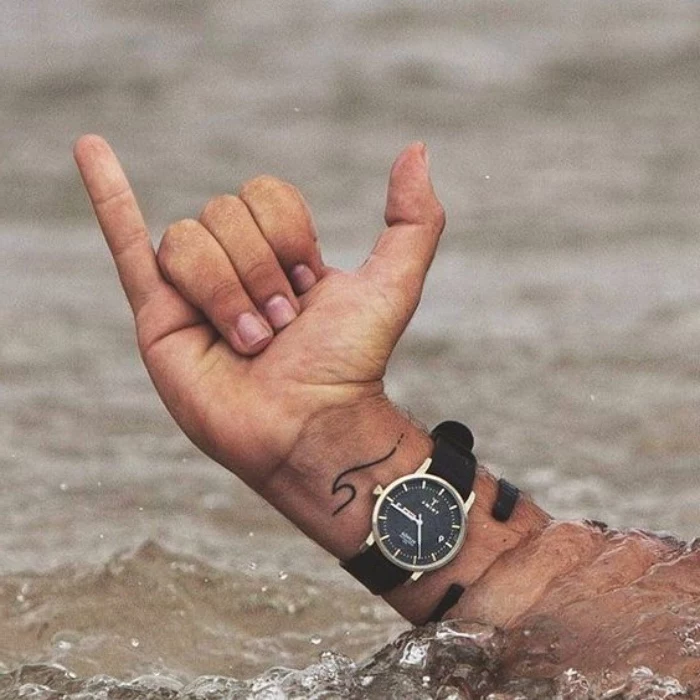
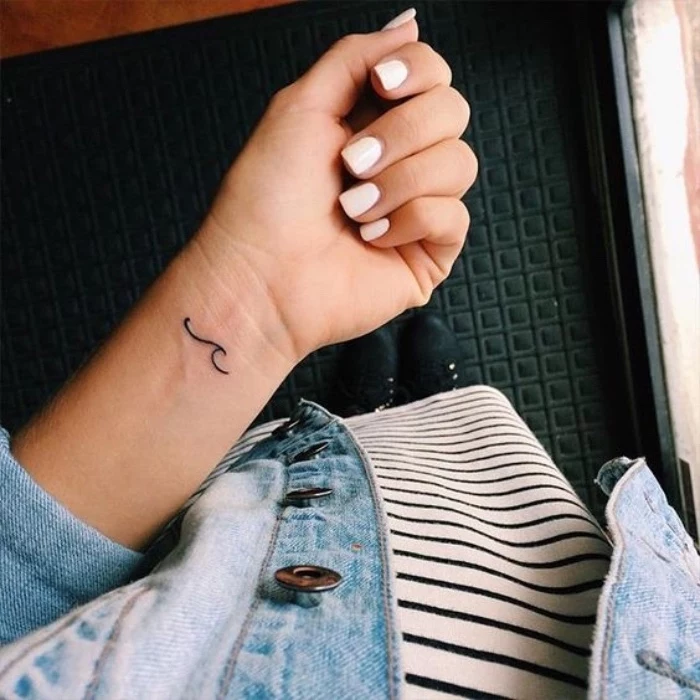

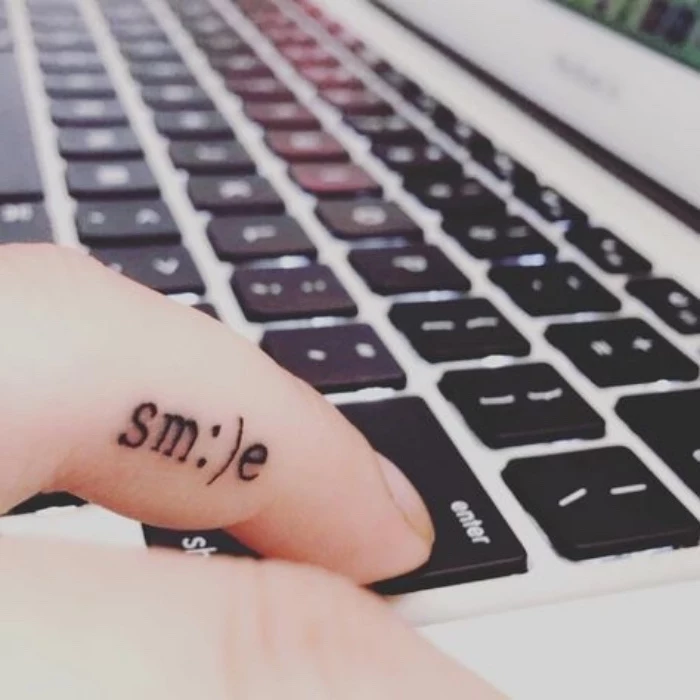
Ready for your appointment? The day before and the day of, your body is the canvas. To ensure the best possible result, make sure you:
- Eat a solid meal an hour or two beforehand to keep your blood sugar stable.
- Hydrate well by drinking plenty of water.
- Avoid alcohol for 24 hours, as it thins the blood and can affect healing.
- Wear comfortable, loose clothing that gives easy access to the area being tattooed.
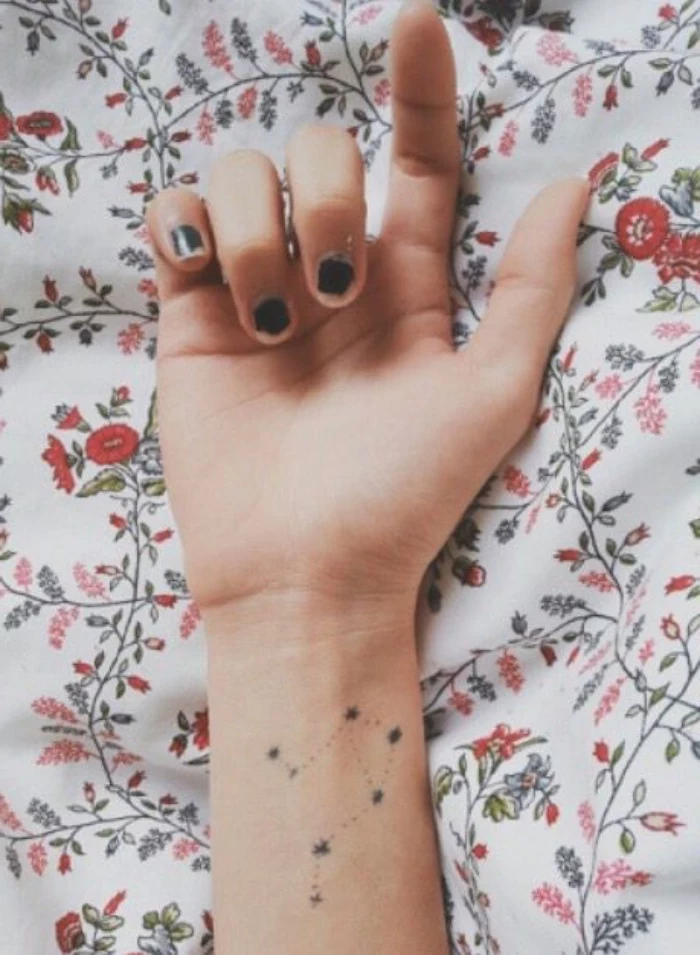
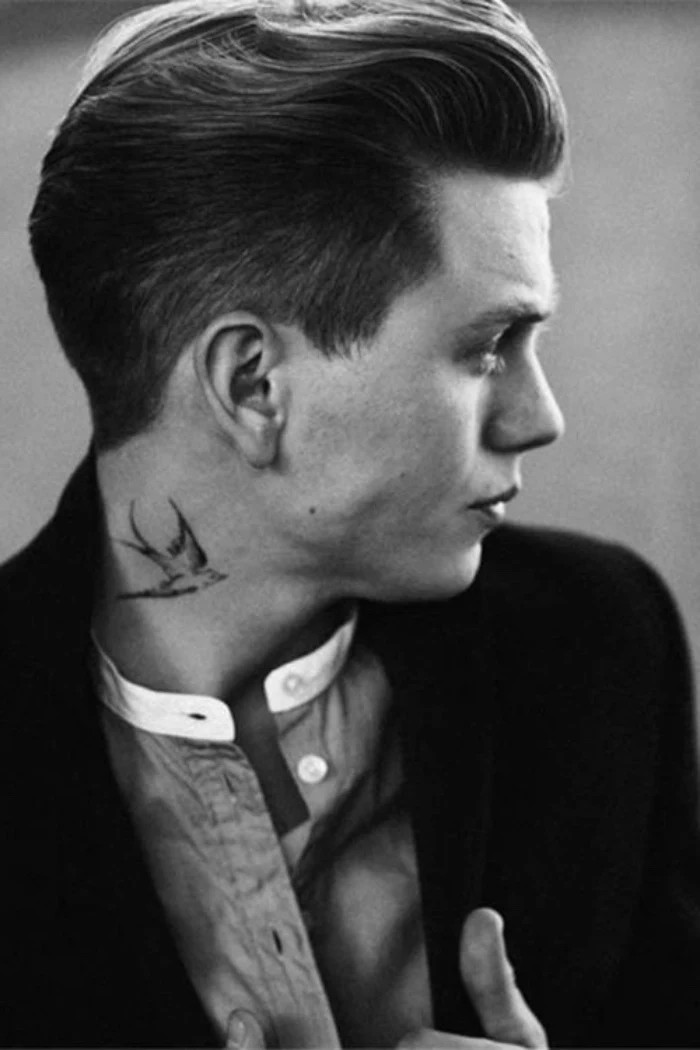
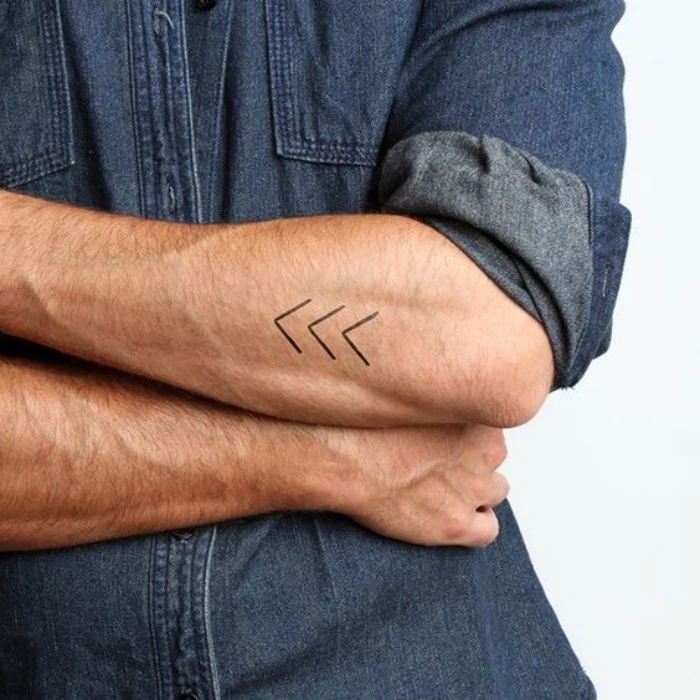
A tattoo is a living piece of art that ages with you. The lines may soften, the black may fade to a gentle grey, but this evolution is part of its story. Don’t chase the look of a brand-new tattoo forever. Embrace the way it settles into your skin and becomes a permanent, personal part of who you are.
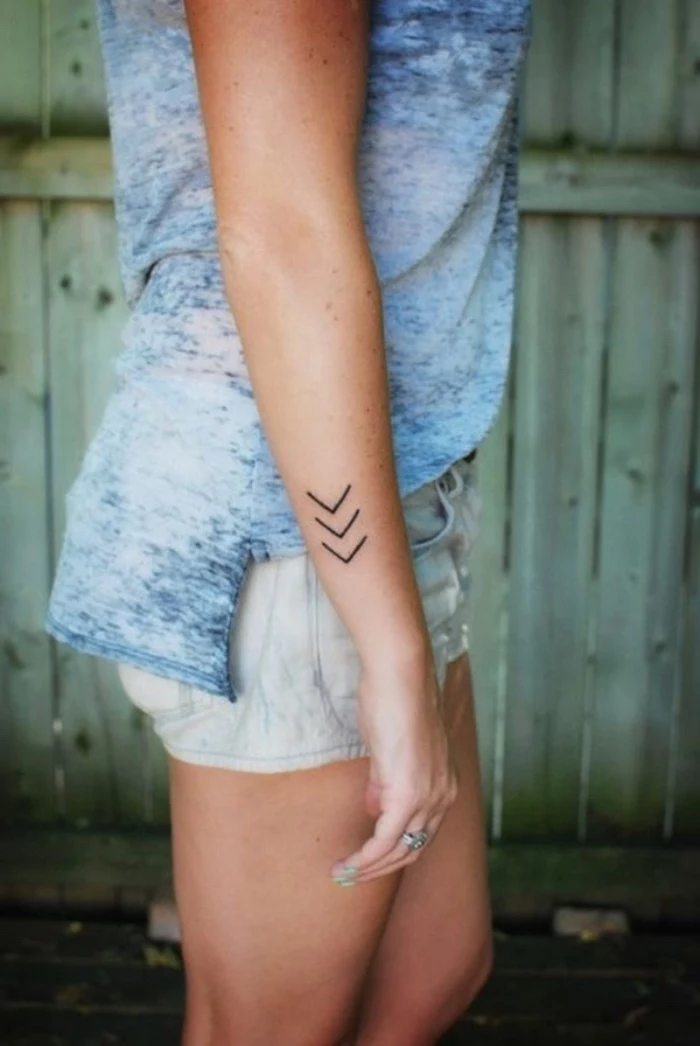
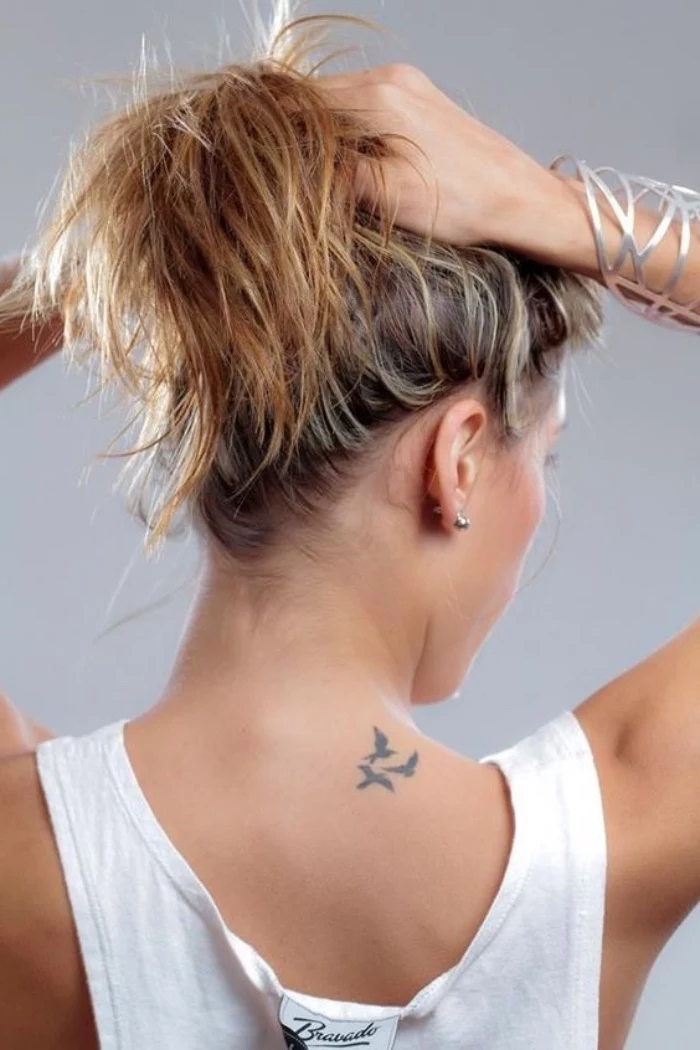
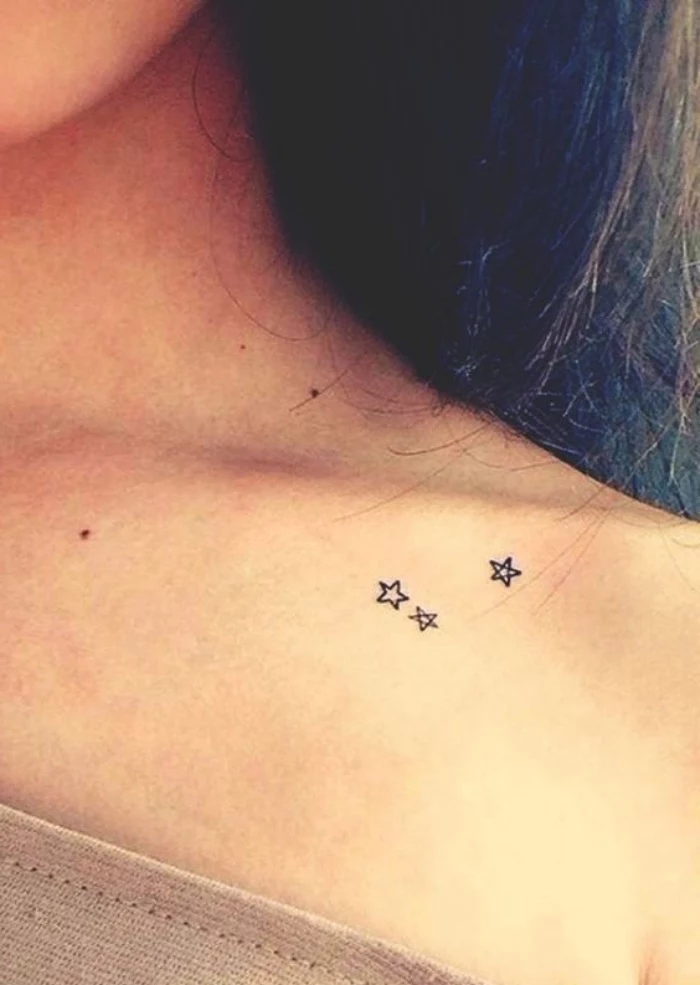
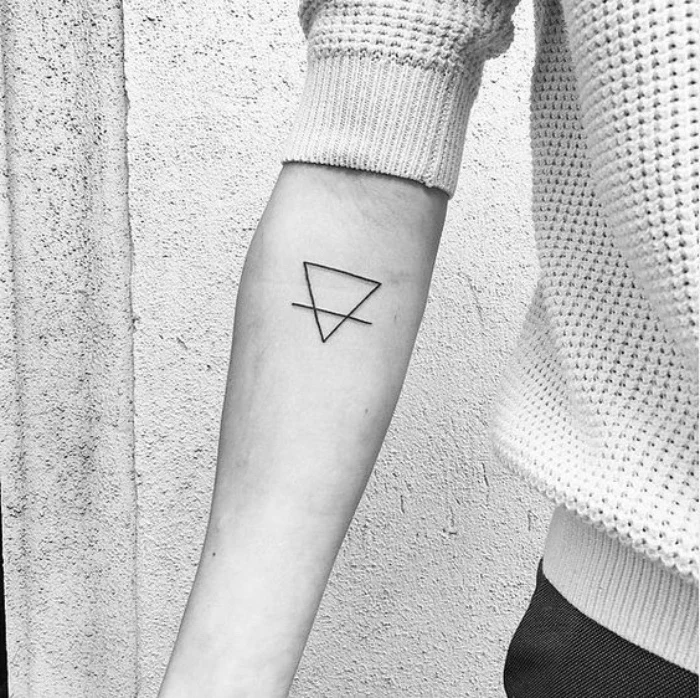
Your skin is not paper; it’s a living organ. Proper hydration makes it more pliable and receptive to ink.
Starting a few days before your appointment, make an effort to drink plenty of water. Dehydrated skin is tougher and more difficult to work with, which can make the process more painful for you and more challenging for the artist to achieve clean, consistent lines.
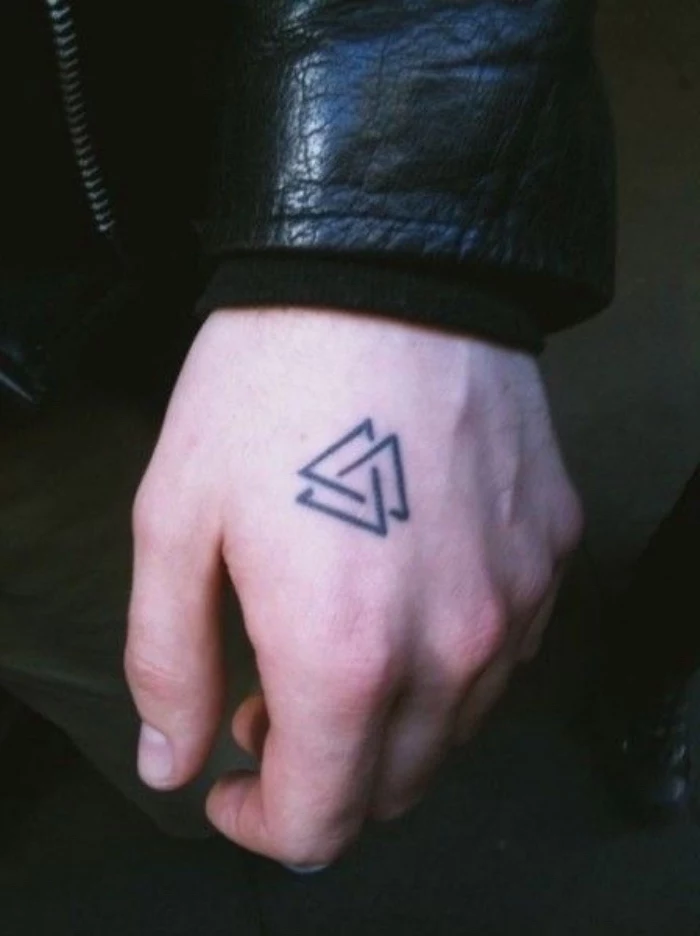
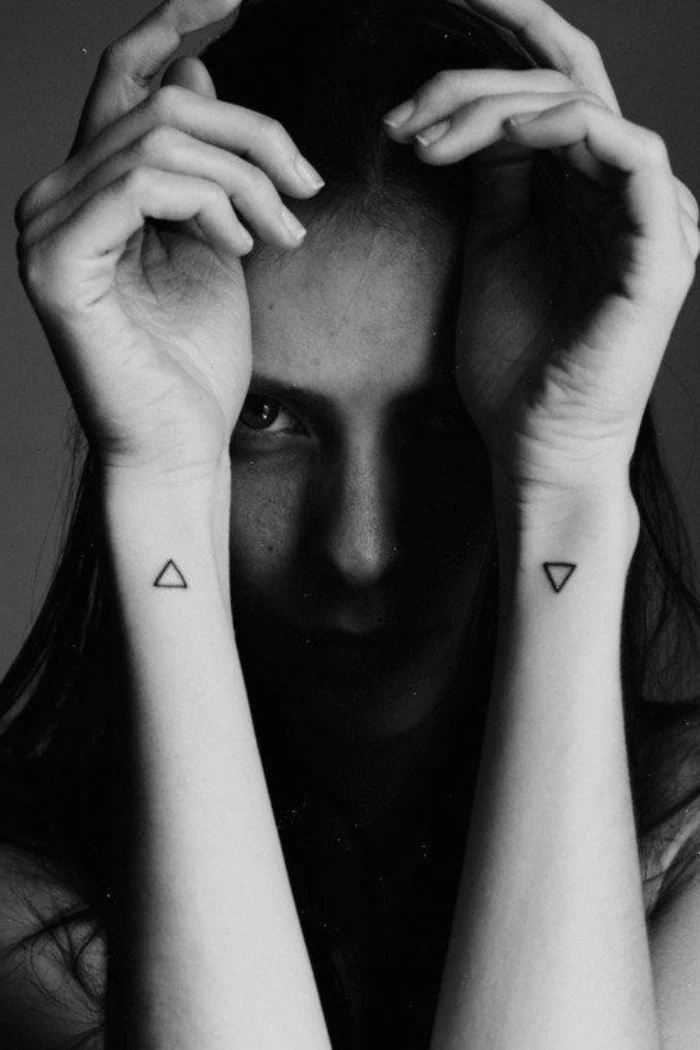
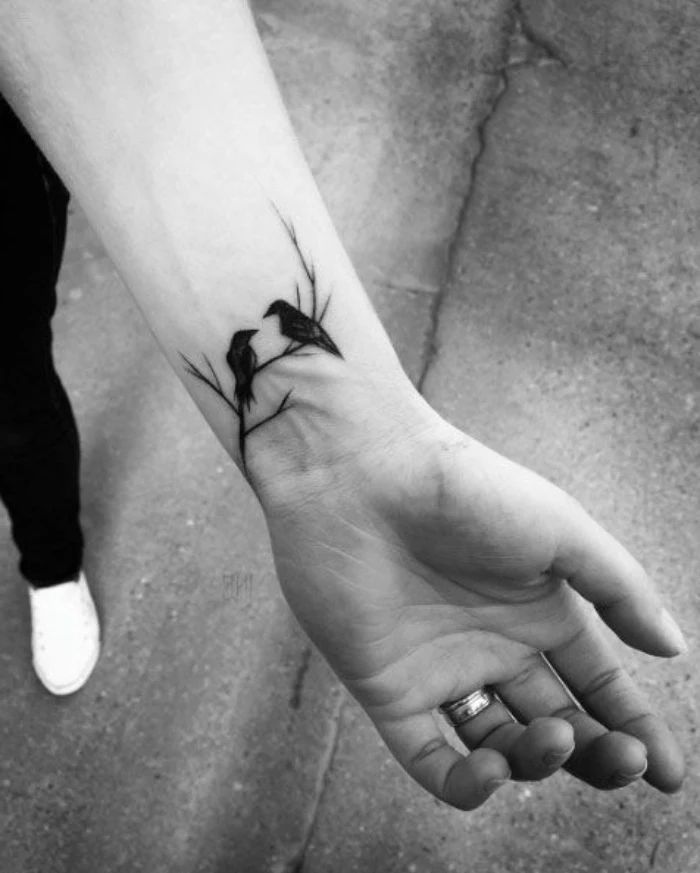
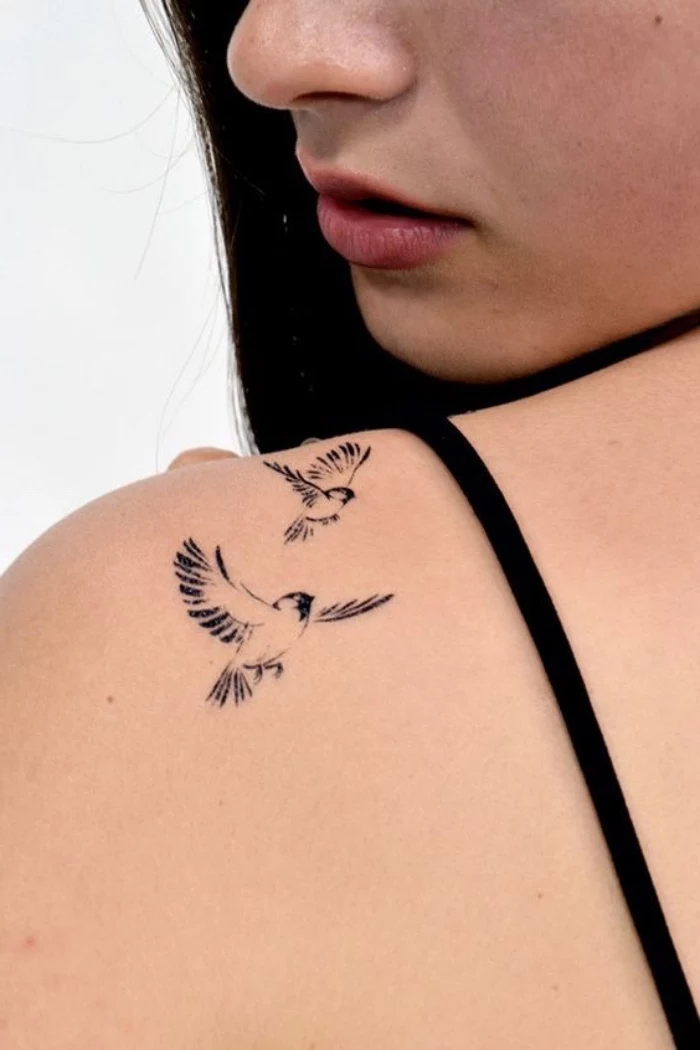
Single-Line: An entire image created with one single, continuous line that never breaks. Elegant and powerfully simple.
Micro-Realism: A tiny, hyper-realistic depiction of an object or animal. Technically demanding and best for low-motion areas.
These minimalist styles rely on precision and negative space to make an impact.
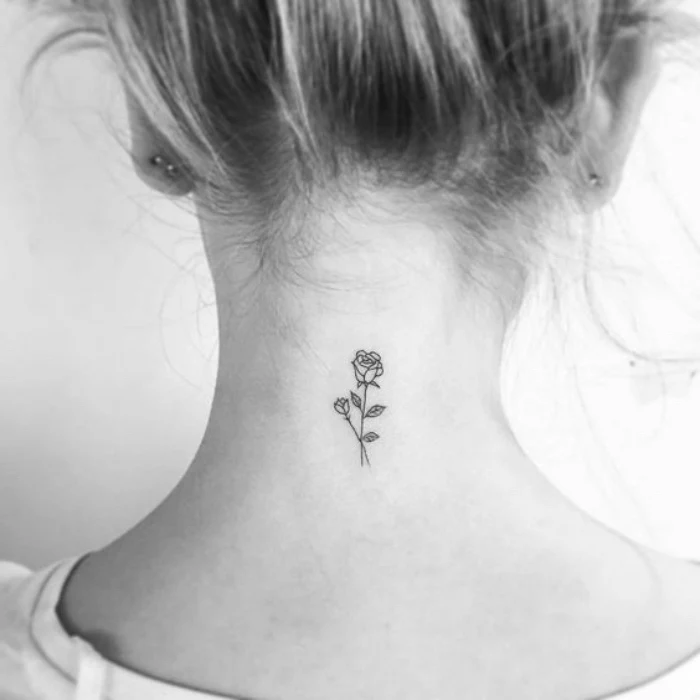
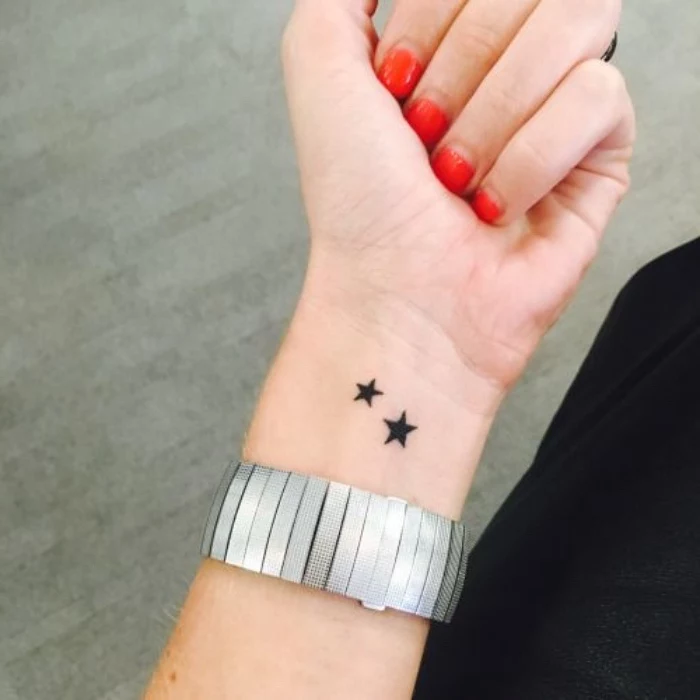
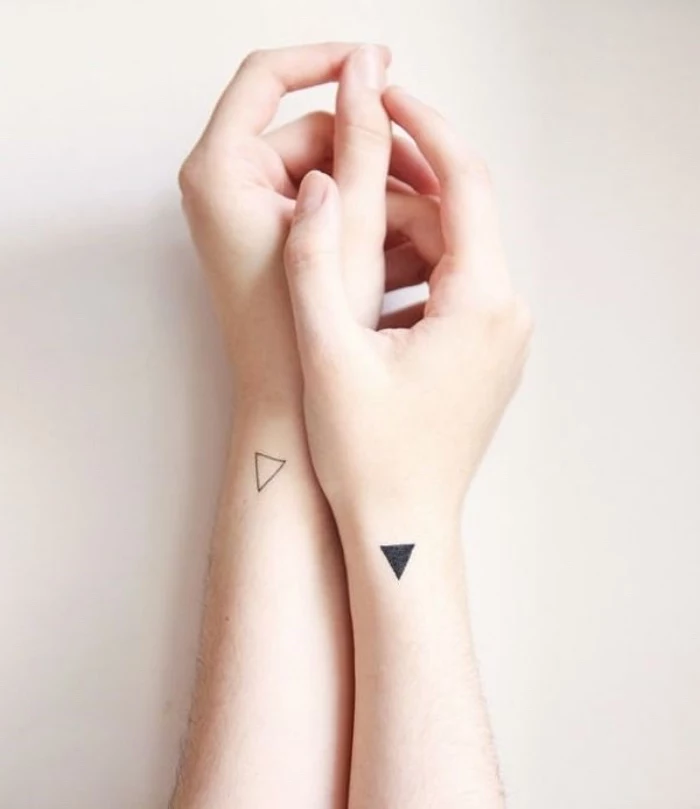
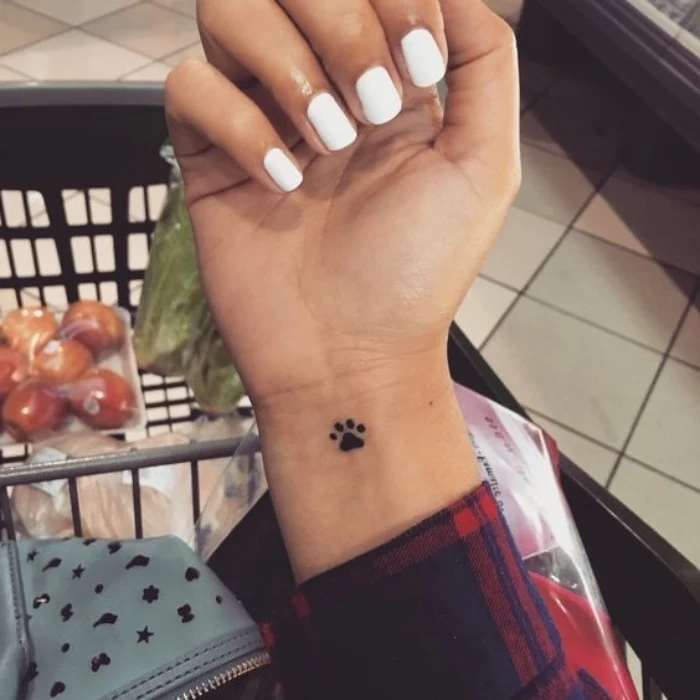
What about those ‘one-year’ tattoos?
You might have seen ads for ‘ephemeral’ tattoos designed to fade away in 1-3 years. The company uses a proprietary ink with smaller particles intended to be broken down by the body. However, many users and artists report that they don’t always fade completely or evenly, sometimes leaving behind a faint, blurry mark. It’s a newer technology, and its long-term results are still being documented.
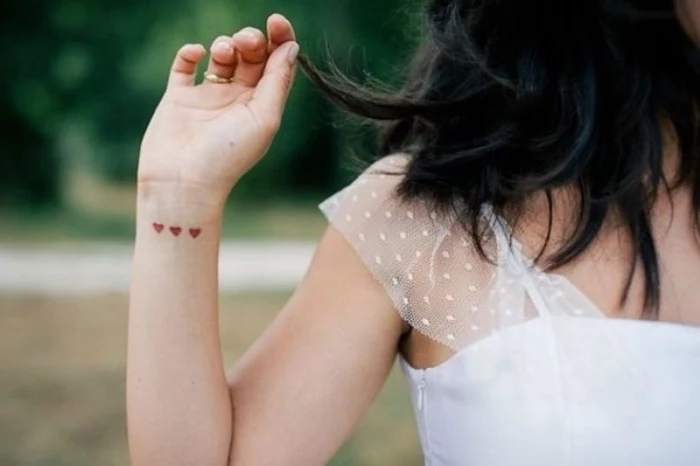
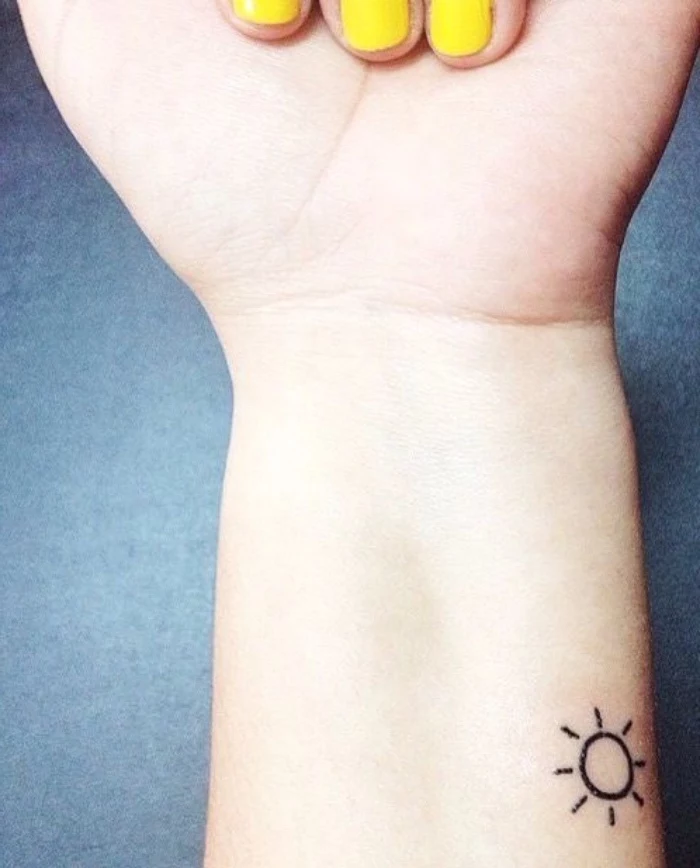
Tattoo removal experts often report that the most common tattoos they are asked to remove are small, impulsive ones on highly visible areas like hands, necks, and faces.

